#House of Night: Otherworld
Explore tagged Tumblr posts
Text
I haven't got around to reading the Otherworld series yet (because that's one of my personal love languages) but am I reading that correctly? Damien got made the High Priest for the House of Night in New York? No doubt as the *first one in existence*, and Zoey said, "hey, please leave your very important job, where the vampyre world is watching you extra close because they haven't worked out having high priests is good yet, because I need someone to do my paperwork for me!" WHAT???
Please let me be wrong here. This is why I haven't read the Otherworld series yet -- because I know it'll be at least as painful as it was watching what Gilmore Girls: A Year in the Life did to Rory's character development

Summary of the entire series.
And I also know that this doesn't change! In the Other World series, Zoey makes changes to the operation of the Tulsa House of Night strictly based on her preferences and desires - this includes dress code, decor, dining hall menus, encouraging Damien to leave his position as the New York High Priest so he can do her paperwork, permanently reserving one of the school's guest rooms for Grandma, and keeping her and Stevie Rae's old dorm room empty so they can sleepover there when they're feeling nostalgic. She doesn't do anything that isn't fun, glamorous, or easy/something to throw money at.
#house of zoey#redeemed#House of Night#House of Night: Otherworld#Zoey Redbird#Damien Maslin#sorry but where does she get off telling the first High Priest to abandon his monumental post to do her homework???#you can tell vampyre men are second citizens in HON because he's extra-competent in the same role she barely qualifies to hold#so at least that's true to form#Theories and Headcanons#i hate it here#Gilmore Girls#yes i was mad that they did Rory like that in the sequel show -- but then i didn't realise she really was that bad
22 notes
·
View notes
Text
A conversation between Moto Hagio, Hideaki Anno, and Shimako Sato
In our first ever translation work we share a riveting conversation between Moto Hagio, Hideaki Anno, and Shimako Sato! Read on our wordpress or keep reading on tumblr under the readmore
For the 189th issue of the Magazine House publication Hato yo! published January 1st 2000, movie director and screenwriter Shimako Sato leads a three way conversation between herself and her acquaintances, the anime and live action movie director Hideaki Anno, and manga artist Moto Hagio. Together they discuss their respective admiration for each other’s work, Anno’s past statements on otaku, their takes on parent-child relations, how to escape puberty, and why Anno finds it scary to be around children.
To Me, There is 5 Ways To End a Story
Hagio: I got really into Neon Genesis Evangelion after it finished airing (laughter). I had been told by an acquaintance that Eva was a work that had “fans who were looking forward to watching the series so enraged by the developments in the final episode that they broke their TVs” (laughter). I wondered what could a work that evokes such strong emotions be like? I was really interested, so I borrowed the VHS tapes from a friend of Shimako-san’s, then I started watching.
Anno: I’m a big fan of Hagio-san’s manga, so when Shimako-san first said she could introduce us and arrange this meeting I was truly happy. The fact that you took an interest in Eva is an honor but… When I first heard “to me, there are five ways to end a story” I thought “as expected; amazing!” So after several twists and turns I finally reached a conclusion
Sato: Anno-san, when did you first encounter Hagio-san’s work?
Anno: The first one I read was They Were 11! during its serialization. In elementary school I read it at the Ear-Nose-Throat Doctor. I generally read manga at the waiting room there or at the barbers, since I didn’t really get any manga to read at home. When I read They Were 11! back then I was blown away. After that I read Hyaku Oku no Hiru to Senoku no Yoru [trans: Ten Billion Days and One Hundred Billion Nights, original story by Ryu Mitsuse]. My favorite work is Half-god [Hanshin]. The fact that such a meaningful story could be told in only 16 pages is amazing. I think Hagio-san is a genius storyteller, but her art is amazing as well. In middle school I thought that if I copied Hagio-san’s art I’d become better at drawing.
Sato: If you had also imitated her storytelling would that perhaps have changed Eva’s final episode? (laughter)

Saving the world, love and hatred
Anno: You know, I don’t have much interest in concluding a story.
Sato: Do you hate wrapping a furoshiki? [trans note: a traditional wrapping cloth]
Anno: No, it’s that I think you can do more with a furoshiki than tie it up pretty. Like break it or tear it to shreds, all kinds of things.
Sato: If we include all that, isn’t that still doing the act of wrapping?
Hagio: In your case Anno-san, I find your way of grasping the world unique.
Sato: For both Anno-san and Hagio-san, even with the differences between manga and anime you’re making a serialized work, right. When you make a long-form work, is the ending something that is already decided? Or is it something that changes?
Anno: For me it’s something like a live performance, and ends up gradually changing as I create the work.
Hagio: I’m a bit too careful, so I can’t draw if I haven’t thought of the ending. An exception is when I made Star Red. Otherworld Barbara which I made later also ended up becoming an exception
Anno: Star Red’s ending was magnificent. I was also influenced by Star Red. Actually, I’ve written some dialogue similar to the one in Star Red’s ending
Sato: Which of the characters do you like?
Anno: Well, the protagonist.
Sato: I like Elg. At first I thought he was a rather unreliable person, but he gradually came to play an active role. By the end he revived a dead planet through love.
Hagio: I also like characters like that!
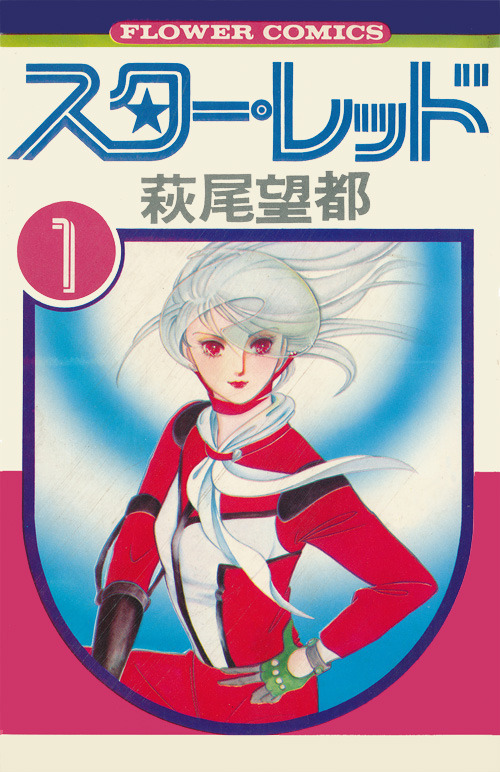
Sato: When I watch Anno’s works like Eva I feel like you are more the kind of person who saves the world through hatred, what do you think?
Anno: I don’t know
Hagio: That feeling of uncertainty becomes the foundation of your storytelling doesn’t it? I come to think that that feeling is something so overflowing you can’t tie it all together.
Sato: It seems you have some differences when it comes to making a story, but I think one thing your stories have in common is perhaps parent-child relations?
Anno: That is true, Hagio-san. Your relationship with your mother appears in your work…
Hagio: When I was a child, my older sister was my mother’s favorite, I was always compared to her. It seemed my mother thought that compared to my sister I was unreliable so she always worried about me, even when I was into my thirties she’d tell me to quit making manga.
Sato: And that was during The Poe Clan’s heyday wasn’t it?
Hagio: (laughter) When I was watching Eva, something that really caught my attention was Shinji-kun worrying about whether or not he was useful to his father. Yet there was a distance between them. During that time I was very interested in, to put it into words, “broken relations.”

Otaku Are Generally Uncool
Sato: Anno-san, in your work I think father-son relations is something that makes an appearance. Are there any real experiences behind that?
Anno: My family was normal. If I have a complex it would be that we were a poor family rather than a just normal one, and my father has only one leg. Regardless, I think stories about parents are the simplest to make, it’s easy.
Sato: So since Eva is a parent-child story it ended up like that?
Anno: What makes it easy is that we have some preconceived assumptions about [parent-child relations], “have you argued with your parents?” and such.
Sato: What appears in your work isn’t those things, but your own internalized problems don’t you think.
Anno: That appears to be it. As for my family we truly were the archetypical lower middle class household. My father was a good person. A sensible man. When you’re under circumstances like my father was you have to live sensibly or else you’re excluded.
Sato: So in opposition to that, you became an otaku.
Anno: That might be it. Your most important model for what normalcy is is your family. But I have a younger sister and she is exceedingly normal. She doesn’t read manga, there is nothing twisted about her at all.
Sato: And by twisted you mean?
Anno: That she’s not an otaku.
Sato: Anno-san, you’ve said that you hate otaku, haven’t you.
Anno: It’s not hate. It’s just that I think otaku are uncool. To otherwise not notice that you’re uncool or purposefully suppressing that fact makes me feel disgusted.
Sato: What about The Matrix? Isn’t that a cool otaku movie?
Anno: That one is also uncool.
Hagio: Even though Keanu Reeves is cool.
Anno: Keanu is cool. Because he is not an otaku. The otaku are the Wachowskis. They can’t get out of the confinements of their otaku-ism. So for example, even if they make something cool, part of it will for certain be otaku-like Even though I say this I don’t hate it. If I truly did I’d quit being an otaku.

Sato: Hagio-san, would you say your family was normal or was it perhaps affluent?
Joh (Hagio’s manager): Hagio-san and her mother actually have a similar biorhythm. It was perhaps due to that fact that Hagio rebelled by pursuing the path of becoming a manga artist.
Hagio: I might have been running away by drawing. But, if I had rebelled by becoming a delinquent I think it perhaps might’ve been more enriching to me as a person.
Anno: To become a creator is not something I think is a happy path to go down. In order to not be unhappy you have to work for dear life. At the very least create works as if you’re going back to zero [from the negatives].
Hagio: Is it a negative? Because you are an otaku?
Anno: Being an otaku is a huge negative. You make up for it either by relying on others or by producing creative works. With that said, I think my generation has it easier than yours, Hagio-san. This is an era where even old men read manga. My parents even now have no issues with my line of work. I appear in Asahi Shimbun, I appear on NHK, they have nothing to worry about. That is also why I will try not to ever refuse any coverage from my hometown newspapers.
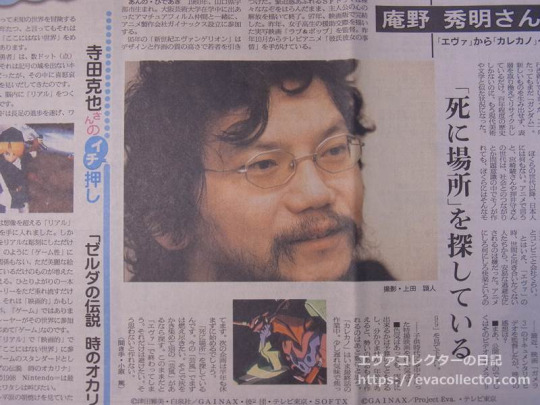
Hagio: But don’t you think parents don’t truly understand? Even if I become famous, my parents will say; can’t you quit drawing manga? And just appear in the newspaper? (laughter)
Sato: But if you quit drawing manga you won’t appear in the newspaper. (laughter)
Hagio: In that context, a part of me still expects too much affirmation from my parents. Not externally but internally. Even if I appear in Asahi Shimbun I still end up thinking it’s not good enough.
Sato: The fact that you still worry so much about what your parents think at your age Hagio-san, it’s so strange.
Hagio: Yes, I think so too

Anno: Could it be that you have to become a parent to change that part of you that worries so much about what your parents think?
Sato: I don’t worry at all about what my parents think.
Anno: I also don’t care even a little bit. As far as I’m concerned, I’m bored if I get my parents’ approval. When I did Nadia: The Secret Of Blue Water for NHK I felt that feeling.
Sato: Do you have a replacement parent figure?
Anno: Well, a man without imaginary enemies is no good. For me right now, I think I want to make works that have Hayao Miyazaki beat.
Sato: Hagio-san, your worries might also be what gives birth to your works.
Hagio: That might be the case.
Sato: Anno-san, earlier, you said “you have to become a parent to change.” I personally don’t think if you don’t have children you can’t become an adult. I think that being an adult is being independent in everything you do. That’s why I think marriage or having children doesn’t change anything.
Anno: You can become a parent without being an adult. At 17 or 18 you could become a parent. To become a parent without even being an adult, that is the problem I think.
Sato: Do you consider yourself to be an adult, Anno-san?
Anno: I guess I’m a child.
Sato: I don’t consider my parents to be adults.
Hagio: I’m very discontent with the fact that my parents aren’t adults.
Anno: I’m not discontent.
Sato: For me realizing that my parents aren’t absolute adults was a relief during my middle school years. Until then I had played the role of an exemplary student, but when I realized that fact I stopped playing that role.
Hagio: So you’re a child who didn’t fit into your parents’ expectations. I was also a child who didn’t fit into my parents’ expectations, but the fact that they didn’t shrug their shoulders and say “that’s fine,” filled me with anxiety. I thought that if I become an adult I’d lose that anxiety. But I want recognition from people. I continue to request affirmation.
Sato: Anno-san, in Eva you portrayed children like this, but are you like this yourself?
Anno: The affirmation? Hmmm. That kind of thing changes with the project.
Hagio & Sato: ?
Anno: I don’t believe in the supremacy of the director of a work, but rather the work itself. What would be best for the work, I only base my judgment on the total. Although I won’t hand over the executive decisions.
Hagio: Manga is a one-man job, but with a movie there’s the director, the scriptwriter, the actors, etc. Each of them sees themselves as a leading part. Furthermore as living beings the things we do will sometimes diverge from the plan we made in our heads. The fun of living is discovering what those differences will be.
Is Eva The Rite of Passage That Will Get Us Through Puberty?
Sato: The movie Love & Pop that you directed Anno-san, the original creator Ryuu Murakami-san and yourself are both men, yet the story is about high school girls. I found that interesting.
Hagio: I thought that both of you wanted to be very similar to an archetypical girl. You said you wanted to see a part of puberty, and girlhood that you couldn’t control. After all, men aren’t just made up of boys. I believe that femininity and masculinity is something we have combined within us. Sort of androgynous.

Sato: The boys you create not having that vivid true-to-life quality to them I think is a representation of that. Anno-san, as a man, what do you think of the boys in Hagio-san’s manga?
Anno: I think they have empathy. I think what I like the most is that all the characters are smart. Because they have such a high intelligence it feels good to read.
Hagio: Like a washing machine right at the peak of its cycle, I want to leave my characters on the verge of that kind of critical point [of merger]. To be honest, the idea that once you’re past 30 you’ve become an old lady, that sense is something we’ve left behind.
Sato: I’ve found that when men become old they lose their ability to be nihilistic in their work, is it the same as that?
Anno: In the case of men, as you age, the world view [of your fiction] rather than your characters come to reflect your nihilism. You don’t aspire to be nihilistic, you yourself are becoming nihilistic. Your world view is what gradually utilizes nihilism. Isao Takahata, for example, is a nihilistic person. Nothing is born from being nihilistic. As nihilism is Plus-Minus-Zero, eventually your heart can’t be moved.

Hagio: A world that doesn’t change, isn’t that comfortable?
Sato: Even though in order to grow you have to fight. By asking like this, Anno-san, did you not experience puberty?
Anno: That might be it.
Hagio: I thought you were right in the middle of puberty.
Anno: I thought I’m losing it, but it might be puberty. Generally speaking, otaku don’t go through puberty.
Hagio: I thought otaku went through a prolonged chronic puberty.
Anno: It’s not what society ordinarily calls puberty.
Hagio: A never ending puberty, in this age, could it perhaps be because there are no more rites of passage?
Anno: Sure enough, you have to bungee jump. (laughter)
Hagio: A ritual to let your childhood die and then replay it, such a thing doesn’t exist now. Taking entrance exams may be the closest to [a rite of passage].
Sato: Don’t you feel like lately that around age 30 is when the coming of age ceremony actually happens?
Hagio: For that part, that’s when the stories takes on that role I think.
Sato: As a ritual?
Hagio: It’s not a ritual, but perhaps more intuitive? A trial run on a mock life. By that definition, I noticed Eva is just like that. I had an acquaintance who is a teacher from the Kyoto Steiner school. They saw the Eva movie in theaters. At that time they found the reactions of the people watching to be more interesting than the story. They had thought, isn’t it like we’ve all come to see the rite of passage which we all failed? I thought so as well “that’s right, that is interesting.” The rite of passage to become an adult after entering puberty, be it Gundam or Eva those stories put people in a position where they are observing the world, observing themselves, experiencing war and such.
Sato: Anno-san, were you considering all this…
Anno: I didn’t make it like that. But when I was making the movie I was thinking of this a little.
Hagio: When I watched Eva it ended up overlapping with the book Childhood [by Jan Myrdal]. It’s a book about a mother who can’t love her child. She thinks “I have to take care of this child”, but even so she can’t love him. I wonder what happens to children raised like this. Children learn from their parents. In truth there will be consequences for the parent, but the question on my mind was children who can’t find their place with the parent, where can they find their place instead? Although I thought you were such a person when you were making Eva, Anno-san. (laughter)
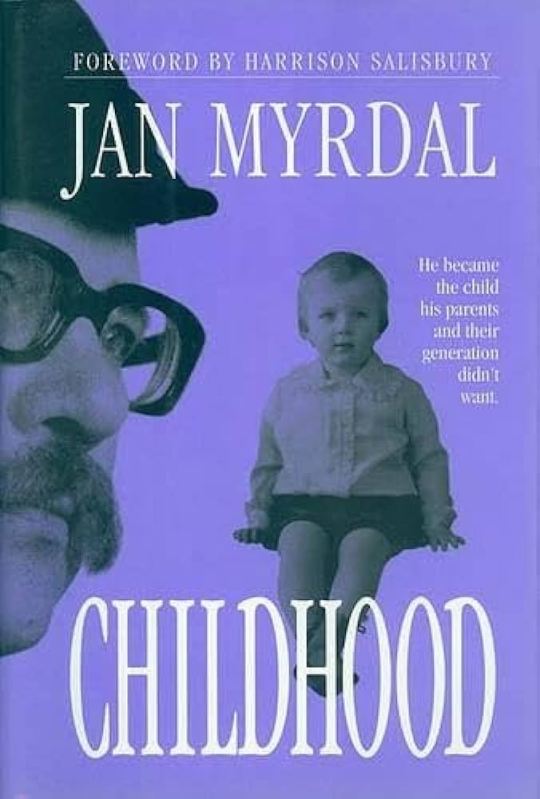
Sato: Speaking of, the other day you were on a TV show teaching grade schoolers about anime, Anno-san. What do you think of children?
Anno: I was scared of being in contact with children. I don’t understand the appropriate distance to take. I believe even the most casual thing an adult says mustn’t traumatize them, I end up becoming oversensitive. In grade school during still drawing class, I’d draw roof tiles and other detailed things, but humans moved around and I found it annoying, so I never drew people. Because of that my teacher said “this isn’t a child’s drawing,” which deeply hurt me. In the end, from that experience I think it was a part of the reason why I decided on working with drawing. Even though I opposed standardized education, I really felt the difficulty of dealing with not having a basic manual.
By the way, how much longer until Zankoku na Kami ga Shihai Suru [trans: A Cruel God Reigns] ends? I made a mistake. I wanted to read it all at once, right, so I refrained from buying it but… when volume 6 came out I ended up buying all of them.
Hagio: Oh yes, right. July next year I think.
Anno: Understood. Then the final collected volume will be out in the fall of next year. Hmm well that means I can enjoy it for another year. Understood.
Sato: Isn’t that great.
------------------------------
Translated by mod Juli, with assistance from two financially compensated native speakers.
A scan of the full interview raws has now been added to the wordpress version!
344 notes
·
View notes
Text
First Timer
Mandi looked at the store like some giant looming beast that she had to battle, never had she been to a sex shop and for good reason. The moment she even thought about sex her face flamed with heat, she was technically embarrassed. Not because of the act of sex, but because of what she enjoyed watching. Being only 21 and still a stupid virgin she had, one night, fell down a rabbit hole of aliens, tentacles, and ovipositors. They only person in the whole world that knew was her best friend JJ, who was as gay and happy as a bag of sunshine and rainbows but also the biggest slut that Mandi knew. He was the reason they were here at a place called OtherWorlds, a boutique for the weird and unusual. But according to the website that JJ found, totally normal for people like her. People who enjoyed the idea of monsters, suckers and knots filling up their bodies. JJ had wanted Mandi to be herself so, like a great best friend searched the world wide web and found this little nugget. Forced her in the car and drove the three hours it took to show up. “For fucks sake Mandi, walk in, it’s a sex shop not a fucking scorpion. Which, by the by, I think they have dildos that resemble the tail. Lets go!” JJ pushed Mandi over the curb and straight at the door. The tiny bell jingled as the door opened and Mandi stood frozen at the sight. JJ however ran right in and began looking. “Come on Mandi! It’s time you experiment!” He giggled as he held up a huge wiggly horse cock. Covering her face with her hands, Mandi shuffled her way towards JJ. “Would you stop that!” She whispered as JJ started to flick his wrist, making the soft cock go round in circles. “I think I need one of these for me girlie! Man this would feel great shoved in my ass!.” JJ exclaimed as a worker made their over with a grin on her face. “First time huh? We can always tell, either too shy or too excited. How can I help you guys? Looking for anything in particular?” Mandi began to shake her head, but JJ being who he was cut her off. “Yes, she needs tentacles. Ovipositors with the eggs that come with. A medium to large probably since she is……unused shall I say.” “Oh gods above JJ, really?! Tell everyone that I’ve never had sex why don’t you, jeez.” Mandi buried her face in her hands as JJ laughed, but the woman just smiled and took hold of Mandi. “I have the perfect stuff, come on. Most people come in here like this, first timers, shy because of what they like but its no biggie.” As Mandi followed the lady she looked on the walls. Dildos of massive sizes were displayed, some had giant heads with long thin bodies while some were reversed, had a slender head but a massive shaft. Some were so large it looked like it would split her in half. Gulping down what she knew was excitement she kept walking. How could she be excited about her feeling like she would be getting cut in two? Another section housed more horse cocks, small ones, medium, massive ones that looked like when fully inserted it could reach her throat. Near the horse cocks, were wolves. These too were in various sizes but they had knots as the bases. Some had multiple knots throughout the shaft, going from regular at the head, knot, shaft, bigger knot, shaft, and even bigger knot. Wouldn’t a person get stuck on that? How would her cunt feel so stretched out that she would literally be stuck on a cock. Mandi felt sweat trickle down her back at the thought. “You know I can tell what you’re thinking buy the looks on your face, you don’t hide your facial expressions well. My name is Nimmie, and yes the wolf cocks do feel amazing stuck inside of you. Too big to slide out but to big to push further in. Your pussy trapped on an immovable object, trust me, its worth it. Worth the pain. The dragon cocks are much the same without the knots.” Nimmie pointed towards a display case that housed a pleothra of muticolored dildos. Some were short and fat while others had what looked like scales in different layers to add a whole new feeling as it pushed against the walls of a pussy or ass. “But these are what you’re after. Yes?” Mandi looked over her shoulder as Nimmie pointed to a blue/black wall. Her mouth popped open as she saw so many different kinds of tentacle dildos. S-curved that ended in a point, short stubby ones that had a bulbous head, each one had different sized suckers on it, mimicking a real octopus. “But, I think your friend mentioned ovis, you’re more interested in the eggs and the feeling of them inside you, right? I’ve used one, fuck it was the best orgasm I’ve ever had. But that was our old stock we got some brand new ones no one has ever tried. They look amazing. Here.” Nimmie reached down and under a self, pulling out what looked like long slender tube with a short flat head on top. It was a dark mossy green that faded into yellow at the tip. Reading the package her eyes widened at the size. Nearly nine inches in length and at the widest nearly two inches at the base. But what intrigued her more was the carton that was attached to the underside of the plastic container that held the cock. “Its eggs! Look! Turn in over, each one is in their own cum, to give you that real effect. So what you do, theres twelve by the way. So what you do is you have to place the cock on the floor and through the opening at the tip of the cock, you just insert the eggs, push them all down and have your fun. As you fuck it, see the little button, you push that and the didlo will start to undulate and push the eggs into you, all that cum and eggs filling your cunt up. When you’re done, pop off and push the eggs out, and repeat as many times as you want. The cum, its some kind of new material that doesn’t wash away, like an egg sack thing. I dunno, but I can’t wait to try it myself..” Mandi turned the package over looking it over and listening to Nimmie talk about it. Fuck, but she was wet just imagining it. She had watched a porn with this woman who had something similar. The eggs had fallen out of her swollen cunt, falling to the ground in pleasurable ‘plops’. She wondered if they would sound the same falling out of her. And could she take all twelve at once? Mandi ran her hands over the eggs, thinking about where she could place it and fuck it. That was the moment JJ ran up to her, his arms filled with lube and cocks. “Get me outta here girlie before I go broke. You found something?” Nodding her head, she hid the ovi behind her and together they walked to the register. ------------------------------------------------------------------------------------------------------------------------------------------ “I know you got that egg thing girlie, call me after and tell me ALL about it! I for one am going shove these beautiful things up my ass.” JJ kissed Mandi on each cheek and left her standing at her door with the black bag in her hand. Excitement rode her. Mandi could feel her slick cunt, needy and ready to take in her first dildo. The apex of her thighs felt heavy with need yet hollow. It was like a low ache, one that was almost painful right behind her entrance. She could almost feel her own heartbeat in her pussy, each thump of her heart knocking at her tight entrance. Placing her phone down, she hit record and then began to undress. Throwing off her clothes, she knelt on the floor and positioned herself so she could watch her body take in the cock. Once everything was lined up correctly, she opened the plastic package with trembling fingers. The cock itself was soft and malleable, but at the thick base she could feel beads that would rotate upwards, she figured those were how the eggs would get pushed up and into her pussy. Next she opened the eggs. Sighing, Mandi reverently grabbed the first one. Nimmie was right, it felt as if the egg was encased in the same slime like substance a chicken egg was surrounded by. The clear like slime wiggled between her fingers as it slipped from her grip into palm after palm, her hands rotating to constantly catch it. Biting her bottom lip, Mandi held it to her face and it roll against her cheek. It felt so warm, almost as if the crate it was in kept them a certain temperature. Before she could think better of it, Mandi popped it into her mouth. The gel like casing rolled on her tongue and nearly down her throat. But the taste. It was like an aphrodisiac straight to her pussy. Juices flowed and coated her thighs as she leaned her head back and moaned, rolling the egg on her tongue and nearly down her throat. Gagging she coughed the egg up and into her hand. She’d definitely have to practice more on how to hold that in her mouth, maybe with the cock fucking her throat too. Mandi fingered the cocks opening and watched as the egg slide down and into the tube where the other 11 quickly followed. Taking a deep breath, Mandi ran her fingers through her swollen pussy, her clit was so enlarged it hurt, her fingers rubbed hard on her clit, eliciting a long low moan from her throat, then she squatted over the cock. Her back was against a wall and with wide eyes she watched herself slowly get impaled on the camera of her phone. Her tight pussy pushed against the head of the cock, opening her pushing against her maiden head. She watched in fascination as her cunt spread, allowing a foreign object to be inserted, thankfully the cock wasn’t giant at the tip, but she could feel the resistance of her flesh, pushing back, not wanting anything to push past her barrier. Her thighs burned as she lifted herself up slightly then fell back down a second time. This round pushed hard the cock breaking though and she let out a painful moan as the cock stretched her new flesh, up and down she moves, deeper and deeper her squats came as she fucked herself down nearly to the two inch base. Her pussy ached, burned as it stretched and tears welled in her eyes. It was too big! But she thought about those wolf cocks and getting stuck, widening her stance Mandi leaned back and placed her hands on the floor and moved her hips. Her pussy made sucking sounds as the cock moved in and out, deeper until she screamed in pain, fuck she wanted to get stuck, wanted this foreign cock with its eggs to seal her pussy as the eggs pumped into her. Tears gathered in her eyes as she moved her legs farther out, her knees hit the floor with a sharp thud and she sat, forcing her pussy to sit down all the way on the cock. Looking into her phone, she could see the skin stretched, her cunt swollen and red, her clit hard and ready for the slightest of touches to send her over the edge. Taking a deep breath, Mandi lifted one leg and felt her way around the base, finding that button Nimmie talked about. Pushing it down, the beads that sat at the base of the cock began to vibrate, rotate around and up. Her cunt tightened its grip and her body jerked as she rotated her hips. Fuck she could feel the eggs rising with the undulations of the beads.
“Fuck. Fuck, Fuck!” Mandi panted as her hand left the floor and slapped at her swollen clit in tandem. She felt the first egg explode from the cock and straight into her, she could feel it right against her cervix, followed by another, then another. Her hand slapped harder at her clit and as she moved she looked down at her flat belly, she watched as her skin moved, pushed out by the eggs filling her.
Her orgasm took root and she flung her head back and screamed. Pressure like never before built low in her belly as she came. Her hand never stopped slapping and rubbing her clit until it was too much and she lifted off the cock, her pussy releasing all her cum and juices in one great spasm. She watched in awe as she squirted, the eggs falling out of her one by one with a wet slimy pop. One after another she watched as she forced her pussy to push the remaining eggs out, each one slowly falling to the floor. Her pussy pulsed and her body trembled with aftershocks of the best fucking orgasm ever!
------------------------------------------------------------------------------------------------------------------------------------------
“I’m telling you JJ I think I lost one! I have eleven eggs nit twelve! What happens if one is still inside me? What am I going to do? Go to the doctor and say hey doc by the way I fucked an alien dong, had its fake eggs shoved inside of me and now I lost one. Can you look in my cunt and tell me what you see?”
JJ just laughed, “It probably rolled under something so stop freaking out! But look we need to go back to that store, cause girl I done used all that lube and those dildos! I’m so gaped I could fit my fist in there!” Shaking her head, she finished her conversation with JJ, thinking that he was probably right. The eggs had come out at first so fast that she lost one. Had to be.
That night Mandi lay curled on her side, her thoughts on sleep, her mind drifting off into nothingness, she felt a soft, wet squelch come from between her thighs. Moaning in her sleep, her body thrashed about, wetness soaked her pussy and sheets as her legs spread by some unseen force. Through her sleep, pain had her eyes flip open and she screamed as e cunt stretched. Her knees bent and she rose on her elbows as she looked down her body. One long thick tentacle slide from her cunt. It was the same hues as the dildo, it slid from her pussy and onto her thigh, the rings of the suction cups molding to her flesh. Scrambling away, her body spasmed as the tentacle stayed stuck inside of her womb, the one long tentacle slithered off her thigh and moved up, the tip pushing through the slit of her wet core. The pointed tip flicked her clit hard enough to shock Mandi into pure pleasure.
“Ohmagod its real. Oh fuuuck its real.” Her voice went from a high-pitched scared cadence to a low, pleasurable moan. This is what she had fantasized about the first time she watched that damn porn. Her fantasy becoming a reality. The alien inside of her wiggled growing thicker, spreading her sunt much like the dildo did, stretching her to the point of pain, sealing tight. The tip of the tentacle slide back and forth on her clit, the suction cups moving languidly over her clit, sucking and releasing each time with each suction cup. The thick base shoved deep in her began to slither in and out, fucking her until she could no longer stand it, her orgasm tore through her body. Her body bowed off the bed, every muscle seized in pleasure and her cum flowed from her pussy in great rushes around the tentacle. Her breathing labored she lifted her head to watch the tentacle move and slither back into her cunt, her lower belly becoming slightly pooched out where it rested in her womb.
Would the other eleven eggs be the same? If they stayed in her would they hatch too? How many could she keep inside of her at once? She wanted to fond out. Would it be like that porn? A tentacle for every hole? Her mouth, ass and pussy all having one at the same time? Her pussy pulsed as her cum leaked from her open slit. There was only one way to find out. Jumping out of bed, she found the ovipositor, and began to pop the remaining eggs into the cock. Her belly wiggled in anticipation as she positioned her phone once more, then sank low on the cock, hoping that the other eleven eggs would too take root inside of her womb.
#sweetmisery#monster breeding#monster fucker#monsterkink#alien kink#alien fucker#alien breeding#tentacles#ovipositor
1K notes
·
View notes
Text
Protecting home and fortune: Irish folk customs for Bealtaine

Bealtaine, also known as May Day, marked a pivotal point in the Irish calendar. It signified the arrival of summer, a time of light, warmth, and the promise of a bountiful season ahead. However, Bealtaine also held a sense of unease. This was a time when the boundary between our world and the Otherworld thinned, inviting the potential for both blessings and misfortune from the unpredictable Good Neighbors. To navigate this delicate balance, people turned to time-honored traditions and a heightened awareness of the risks of everyday life.
Appeasing the Good Neighbors
On Bealtaine, it was widely believed that the Good Neighbors became particularly active. To ensure their goodwill and prevent them from causing mischief, people would leave out food and drink as offerings. The belief was that the the Good Neighbors were attracted to these offerings and would be less likely to cause trouble if they were satisfied.
You all know May is the month of the fairies. Great people or men that lived long ago rises from their graves on every night in the month of May to fight the old battles that they fought long ago these men are called fairies. The bad fairies do great harm and trouble in the month of May they kill cattle take away milk and butter from the cows and alot of other mischief. Source
"The fairies come around our houses too to do mischief as well as they come to the cattle; you should sweep the hearth very clean and leave food aside for them. If you don't the fairies will come when you are asleep and will torment you by tricking you or pinching you." Source
Primrose
Primrose was believed to ward off the Good Neighbors, and scattering them in the doorways and window sills of the home created a barrier no troublesome spirit could cross.
"During the first three days [of May] fairies entered the house. They came disguised as old men or women in order to steal coals and in order to prevent them primroses were scattered on the doorway no fairy could pass this flower." Source
"The best preventive of fairy power was to scatter primroses on the threshold, for no one could pass the flowers and and the house and house-hold were left in peace." Source
"Guard the house by a string of primroses across the door on the first three days of May. The fairies can pass neither over nor under the string." Source
Rowan
This tree was seen as potent protection against otherworldly forces. A branch hung above a cow's stable door could ward off those who might steal the milk, ensuring the cow's blessing for the year. Branches decorated with spring flowers were also placed around the house for a bit of extra good luck.
On May Day before sunrise the eldest member of the family gets up, he goes out, pulls a branch of the rowan tree and hangs it over the cow's stable door. This is done to prevent the fairies from taking any of the milk from the cows. Source
Another custom is to get a branch of Rowan tree and decorate it with may flowers and primroses and leave it in the middin standing. Then strew may-flowers into each outhouse door and on the doorstep and in the windowsills. This is to welcome the good fairies so that there will be good luck round the year. Source
If you put a rowan tree up the Chimney nothing can bring the butter out of the house. Source
The May bush: blessing and protection
The May bush was a common custom in Ireland, particularly in Leinster, South and West Ulster, and some areas of Munster and Connaught. The May bush often featured hawthorn branches brought home and decorated with flowers, ribbons, and colorful eggshells saved from Easter.
The May bush was believed to protect the home from evil spirits, particularly fairies and witches. It was also thought to bring good luck and prosperity, especially in relation to milk and butter production.
It is a great custom also to make a May bush on May day. This consists of a bush, which is put standing in the dungpit. The bush is decorated with flowers and eggshells. The eggshells are kept after Easter Sunday. Source
On May morning a Maybush was placed outside each house. It usually was a yellow furze bush with a number of eggshells stuck on the thorns. Source
The people around this place make May-bushes on the first of May. They pull a bush and gather flowers and tie them on to the bush with strings and stick it on the ground and after that they say their prayers around it to honour our Blessed Mother and they make a little Altar and put flowers every day on it during May. The people long ago used to make May-bushes and they also used to make a little Altar. Source
The evening before the first of May the people go out and get a piece of a certain tree which they call May Pole. They put this bush outside the door and they put all the egg shells they had on Easter Sunday on it. They also put a lot of flowers out side too. If the people do not put up the May Pole the fairies will come. They also tie May Pole to the cow's tail and if they do not, the fairies come and take the milk from the cow. Source
Guarding your luck
Bealtaine is a time that came with a heightened fear that any careless act could invite bad luck for the whole year. During Bealtaine, even seemingly simple acts held risk.
Giving away even staples like milk, butter, or coins risked also surrendering your good fortune. Lending a tool or sharing even a hot coal from your hearth could lead to unexpected misfortune.
On May eve no one cares to give away any milk or butter fearing their luck would be taken. Source
Long ago the people used to have a large number of pisreogs on May day...They would not give away anything to anybody on May day, only to a beggar man. When he would come in they would give him great welcome. They would say he was bringing in the good luck. The old people would not allow anybody to bring fire outside the door. Everybody would have matches on May day. The old people would not allow any fire outside the door. Source
On May Eve or May Day nothing is given out of the house. Source
They considered it unlucky to give butter or milk way to any person on May Day as they would be giving away their luck. No stables were to be cleaned out on that day. The first person to go to the well in the morning was supposed to have luck for the rest of the year. It is not right to give money to anyone on that day. But if you get money on that day you will be getting it for the year. Source
The people of the house do not put out the ashes on that day or if a person asked for a coal they would be refused. Source
Another custom of the Irish, they would not lend any article or give either milk or food even to beggars. They would not light a fire on May Day until it was late in the day for fear that the people would see the smoke and would bring the butter. Source
The customs surrounding Bealtaine offer a fascinating glimpse into the rich tapestry of Irish folklore and the enduring human desire to shape our luck through ritual and tradition. Whether leaving offerings to appease unseen spirits, scattering flowers as wards against misfortune, or cautiously guarding their possessions, people sought to influence the unseen forces that shaped their lives. These traditions, born in a different time, speak to a fundamental human desire for control, for a sense of agency in the face of an uncertain world. While the specific fears and beliefs may have shifted, the impulse to use ritual and superstition as a means of navigating life's unpredictability remains surprisingly relatable.
#Bealtaine#beltane#may day#irish folklore#celtic paganism#irish paganism#irish pagan#pagan#paganism#witchcraft#witchblr
158 notes
·
View notes
Text


Saiwa stirred a few times during the night, antsy to go back to his computer to search for Tiny Can, but Jeb didn't losen his arms around him. As promised. Even though it's weird to not see Sai's reflection in the mirror - and his froathy toothbrush hovering in the air, Jeb couldn't be happier. He was craving Sai's return back to their home. Standing here in his bathroom, brushing his teeth together with Kiyoshi, just wasn't the same. Jeb wished Sai would move in with him. But he knows Sai wouldn't want this. No matter how much he loves Jeb, Sai needs his freedom - and alone time.
And before Sai even bothered to get dressed, he ran over to the Corner Store, to call Rubyn over their only connection to the mundane world - their Post Office Device. Maybe she has an idea how to track down the tin can. After their fruitless search in the Otherworld, it was clear that Tiny Can had managed to leave somehow. So he must be in the Muggle World.

And after Sai gave Rubyn a brief overview about what happened, Rubyn offered to order a few upgrade parts for her devices so they should be able to find a signal of Tiny Can. This would take her a few days, but then the Boys could come over and help her setting everything up and track down the fugitive Astromech. Rubyn also asked Sai to bring along their Therapy Game Server. Some components would be useful since Tiny Can had been connected with the server they installed in the basement to run the game.

And while Sai was chatting with Rubyn, the Post Office Device was already busy sending their produce over to the mundane world, so Noxee could sell them. The Boys urgently need to make money. To pay for their school fees and for Rubyn's help - again... Eventually Jack called Sai for breakfast, but he wasn't hungry. Where are they supposed to get all that money from?

He talked about his worries to the others. It took them months to pay back the last loan. And now they have two big expenses to cover.

But Vlad reassured him. Their produce, crafted in the Otherworld, sell at top prices among creatures all over the worlds. No one can stay here for longer, let alone craft something, so anything from the Otherworld is precious - and of high value. And while Jack, Ji Ho and Sai lived at the Beach House to develop the Therapy Game, Vlad, Jeb and Kiyoshi worked hard and made enough money to pay back the last loan. They'd even been able to put a good amount aside.

Sai was relieved. This would be enough to buy the components Rubyn mentioned and athena already agreed to give them the loan for their school fees. Phew, finally a silver lining at the horizon! Sai's appetite was back and he enjoyed having breakfast all together back at their home. He looked lovingly at his friends. They have a few days now until they'll have to leave for the muggle world to meet Rubyn, so Vlad and Ji Ho have at least some time to recover between teleporting them around...

And so they seized the days with work. There had been lots and lots of inspiration over the last weeks. Whenever he had time to breathe, Ji Ho scribbled down and recorded ideas for songs, so he was able to finish a few in the short amount of time they have. And now, that he is in contact with his feelings again, his songs have more emotional impact and hit deeper. He does not even need to put any of his Siren's Song magic in them to achieve this.

Vlad was writing and painting. Also with fresh ideas for his novels and stories. And now that Ji Ho is finally able to love him, his paintings are much brighter and more meaningful. And whenever Ji Ho needed a break to sort the creative overflow in his head, he did the chores. More often than not, he ended up in Vlad's room. Which made Vlad smile contently, and his fingers flew over the keys with new inspiration and confidence.

Jack and Kiyoshi worked happily in their wine and cheese shop. Both, nectar and cheese, age well here in the Otherworld and develop an unique taste that is nowhere else to be found. And, as we see in the pic below, they are crafted with love.

The fresh, organic produce from their garden and greenhouse made the nectar and Jeb's potions even better.

Jeb mastered his jewelry skill and with the metals and crystals he found in the Otherworld, he crafted the most wonderous enchanted jewelry.

And Sai kept in touch with Rubyn. They are working on the program to track down the tin can... Let's just hope they find Tiny Can and give the money - he somehow stole - back before someone finds out what happened o.o

'Look into my eyes you will see What you mean to me Search your heart, search your soul And when you find me there, you'll search no more Don't tell me it's not worth tryin' for You can't tell me it's not worth dyin' for You know it's true Everything I do, I do it for you, for you, yeah Look into your heart you will find There's nothin' there to hide Take me as I am, take my life I would give it all, I would sacrifice Don't tell me it's not worth fightin' for I can't help it, there's nothin' I want more You know it's true Everything I do, I do it for you, yeah There's no love like your love And no other could give more love There's nowhere unless you're there All the time, all the way Look into your heart babe
No You can't tell me it's not worth tryin' for Just can't help it, there's nothin' I want more Yeah, I would fight for you, I'd lie for you Walk the wire for you, yeah, I'd die for you You know it's true Everything I do, ooh, yeah, I do it for you, yeah'
Everything I do - Bryan Adams
Outtakes
Kumo's combat training with the goat dummy ^^'

From the Beginning 🔱 Underwater Love 🔱 Latest
Current Chapter: starts ▶️ here Last Chapter: 'Here comes the Sun' from the beginning ▶️ here
📚 Previous Chapters: Chapters: 1-6 ~ 7-12 ~ 13-16 ~ 23-28
#underwater love#Piglets in Space#woo ji ho#jack callahan#kiyoshi ito#sims 4 story#sims 4#saiwa#the happy home#kumo#jeb harris#tomarang#giga byte#vladimir tepesz#morensong#simblr#ts4#simlit#sims story#the sims 4#ts4 story#sims 4 vanilla
45 notes
·
View notes
Text
Some scholarly notes about the Grimm fairytales (1)
Recently in France (well... for the last two dozen years), the publishing house José Corti has been specializing itself in scientific fairytales collections. While for the study of literary fairytales one would go towards Honoré Champion, when it comes to folktales and fairytales it is José Corti one must check. In their "Merveilleux" collection they have been publishing for the very first time in France or republishing out-of-prints collections of various European fairytales (from Denmark, Spain, Romania, and more) - with a few classics of the "literary" fairytales that marked deeply the evolution of the genre (such as Straparola's Facetious Nights or Ludwig Bechstein's fairytales).
All of that to say, José Corti has in 2009 published the most recent scientific (but for an all-public) edition of the brothers Grimm fairytales. The full collection of their fairytales, translated accurately in French, with annotations about their type/classification, their evolution throughout editions and their predecessors. I can't share all of these annotations with you, of course, but I can share a handful of them, about the most famous stories of the Grimm. They all come from the same person who translated the story in this edition: Natacha Rimasson-Fertin. (Of course my notes might be incomplete but hey, you'll have to buy the books to see the whole thing :p Or check them out at your local library)

The devil with three golden hairs (Der Teufel mit den dre goldenen Haaren)
This story is at the crossroa between the Aa-Th 461 "Three hair from the devil's beard" ; the AT 460B "The quest for fortune" and the AT 93à "Urie's letter/The prophecy".
In the 1812 edition, there were two different versions of this tale. Story number 29 "The story of the devil with three golden hair", told by Amalia Hassenpflug, and number 75, "The phenix", told by her sister Mary. In the second version the devil was replaced by a phoenix, and the hero had to get three feathers. In the 1819 edition the two stories disappeared and were replaced by the version we know today, told by Dorothea Viehmann. Another version that the Grimms had collected in 1812 had a princess falling in love with the woodsman that cuts a tree below her window.
The final episode, where the hero asks three questions to the devil through the old woman, echoes the Pentamerone's "The Seven Doves". Other versions of this story include Asbjörnsen-Moe's "The wealthy Peter Krämer", and Afanassiev's "Marco the Wealthy and Vassili the Unfortunate". The story of the brothers Grimm gathers several references to the Bible: the child throw in the water echoes Moses' abandonment, the letter meant to kill the hero is similar to the one David uses to kill Urie, finally the hair as holders of a being's wisdom and strength is linked to the legend of Samson and Dalila. But many other elements of the story evoke older faiths. The idea of a body of water as the frontier with the Otherworld can be found in the Classical Antiquity with the Greek Charon, and is found in other stories of the volume, such as "Frau Holle" and "The Iron Stove" - it as believed that water formed an obstacle spirits could not cross. The hero's mission recalls a tale of Saxo Grammaticus where Thorkill enters Utgard (the realm of supernatural beings) to steal a hair from the beard of Utgard-loki. The brothers Grimm had noted that the belief in the exceptional fate of a child born with a "hood" was also found in Iceland, where the "caul", called Glückshaut (skin of luck) was the home of a genie that would follow the child all of his life. And indeed, modern research has proven that the name given to this caul, the "fyljia" was also the name of a spiritual double, a tutlar spirit tied to a person or a family. This is why the tradition was to preserve and hide this "pileus naturalis" - in Belgium, it was called a "hem" and its color allowed for divination rituals about the child's future.
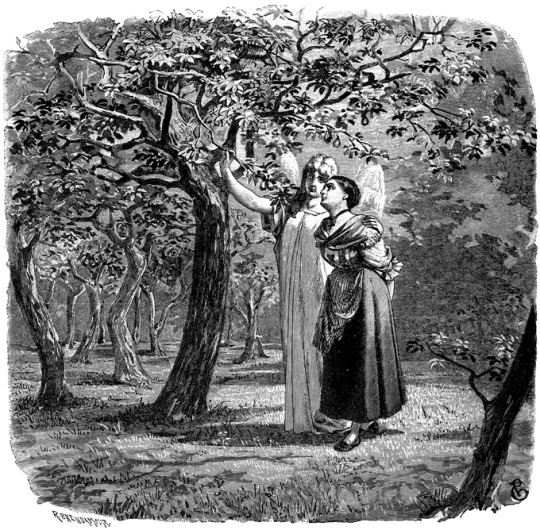
The girl without hands (Das Mädchen ohne Hände)
This fairytale is actually a cross between the AT type 706 "The maiden without hands" and the AT 930 "Urie's letter/The prophecy". The story was created by the brothers mixing two versions from Hesse, one told by Mary Hassenpflug, the other by Dorothea Viehmann. The second version lacks this story's introduction and begins with a father trying to marry his own daughter - when she refuses, he cuts off her hands and breasts, and chases her out of his house. It then follows the story. Meanwhile, the first version differs when the heroine is with her child in the forest: an old man tells her to hug three time a tree with her arms, which makes her hands grow again. He also tells her to only open the door of her house to one who will ask to enter "for the love of God" three times in a row - the king will be forced to do this before entering.
Outside of these two main versions, the brothers Grimm collected three additional ones. In the first, the angel that guides the girl is replaced by a small light that descends from the sky ; and the hands of the girl grow back when she plunges her arms in a stream after seeing a blind mouse enter its water to regain its sight. In the second version, a man is upset at his little girl praying for him day and night, but since she refuses to stop despite his demands, he cuts off her tongue. But she prays in thought and makes the sign of the cross, so he cuts off her right hand, then her arm all the way to the elbow, before banishing her. She is saved by a hunter that hides her in his master's domain and feeds her in secret with his master's dogs. When the master discovers this, he decides to raise the girl as his own child. One day she gives money to a poor man, who tells her she will regain her arm and tongue if she goes to drink of a certain stream, and he gives her a magical staff to protect her. When she returns at the lord's house, he marries her. The third version is about a queen banished by her husband with her two children, and is identical to the legend of saint Helen.
Other international versions of the tale include Zingerle's "The pretty daughter of the innkeeper", Basile's "Penta the one-armed girl" and Afanassiev's "The young girl without hands". There are some versions where it is a man that is mutlated, such as Afanassiev's "The brave without legs and the blind brave". The roots of this story date back to the end of the 12th century, and are located in southern England - this tale was the subject of numerous literary adaptations, the most famous being the verse romance of the 13th century "The Beautiful Helen of Constantinople".
The motif of the child sold to the devil is recurring among the Grimm fairytales - even though the character of the devil can be replaced by another supernatural being, such as in "Rapunzel" or "The Nixie of the Mill-Pond". The idea of offering the first thing one sees upon returning home is as old as the Ancient Testament (Judges). This story bears the signs of a heavy Christianiation, and was clearly inspired by the legend of Saint Genevieve of Brabant, falsefely accused of being unfaithful and condemned to death with her newborn child. The executioners take pity on her and she lives alone in the woods for seven years. As with other tales from the Grimm collection, this story mixes the Christian fantasy (the hands that regrow are treated as a Christian miracle) with pagan fantasy (there are several elements of folk-magic, such as the circle the girl draws around her to be protected from the devil, or the accusations of the queen giving birth to a changeling - a changeling also appears in the third story of "The Elves", KHM 39).

The Robber Bridegroom (Der Räuberbräutigam)
This story belongs to the fairytale type Aa-Th 955, named after it: "The robber bridegroom".
The tale was told to Jacob Grimm by Mary Hassenpflug, and was present as early as the 1810 manuscript. However this first version, that the brothers deemed "incomplete" was replaced from the 1812 edition onward by a new version which mixed two versions from Lower-Hesse. The brothers noted the existence of another version where the robber indicated the road to his house to a princess, by tying ribbons around the trees.
Ludwig Bechstein took inspiration from the brothers Grimm's tale to create his own "The Robber Bridegroom". This fairytale, like "Fichter's Bird", belongs to the "Bluebeard cycle" (several tales that the brothers removed from their first edition also belonged to this cycle).

Fitcher's Bird (Fitchers Vogel)
This tale is a variation of the Aa-Th 311 "The heroine rescues herself and her sisters", usually classified under the "Bluebeard" category.
The final text of the Grimms is actually a mix of two different versions of the same story that was told to the brothers by both Friedrike Mannel and Dortchen Wild. The Grimms noted the existence of a version from Hanovre which goes as follow: a poor woodcutter asks his daughter to bring him his meal in the forest, and to show them the way he places peas on the floor. However dwarves notice this, and change the emplacement of the pea so that their path leads to their grotto. The older girl follows the peas, and become the dwarves' slave. Then we have the Bluebeard "forbidden room" motif, and the story goes as the "Fitcher's Bird" goes, as the dwarves lure the two other sisters to their cave. The last sister sticks the feathers on her body by rolling herself in blood (presumably the blood of the dwarves' victims), and there is no resurrection of the sisters. Everybody that meets her on the way call her "geputzter Vogel". The dwarves hunt the girl down and almost catch her just as she reaches her father's house - she is so fast in closing the door that it cuts a piece of her heel. The Grimms also knew of a Dutch version of the story, translated in German, and that was identical to one of their first-editions tales, "The Murder-Castle".
The translation of the name of the "bird" always caused many problems, due to the difficulty of understanding the expression. The brothers Grimm themselves explained the name of the bird by the Icelandic "Fitfuglar", meaning "birds that swim" - as such, the girl would be called "Fitchers-Vogel" because she looks like a swan". However, other people do not agree with this etymology, some linking Fitcher with "Fitze", the thread. Rimasson-Fertin highlights that the expression "Fitchers Fitze", outside of a simple sonority game, might be two variations of the male name Fritz (the diminutive of Friedrich) - other usual diminutives were Fitze, Fitz and Fiete. The brothers Grimm noted that the motif of the blood that cannot be erased was much older than Perrault's Bluebeard - it could be found as early as the "Gesta Romanorum", where a mother who had murdered her child couldn't erase three blood-drops from her hand, forcing her to wear a glove. This story must be compared to the KHM 40, "The Robber Bridegroom".
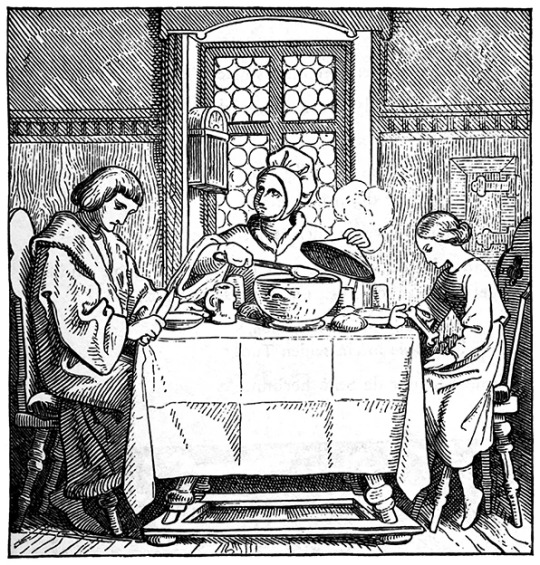
The Juniper Tree (Von dem Machandelboom)
It is the AaTh 720 "My mother killed me, my father ate me".
Just like the tale of "The Fisherman and his wife", this story was written by the painter P. O. Runge, and the brothers Grimm used it as a model for how they should present their own fairy tales. In fact, we can note sentences almost identical between the two tales.
The brothers noted a variation of the story where the stepmother places her daughter near the pot where her brother cooks, and she forbids her from looking inside. But since the pot boils too much, the girl lifts the lid - then her brother's hand reaches out to her from the cauldron. There is yet another version noted by the Grimm where there are three children, not two, and the stepmother sends them pick up strawberries in the wood, promising an apple to whoever comes back first.
The cruelty of this fairytale earned the brothers a serious criticism from Achim von Arnim - who only tolerated such violence because it echoed the one present in Goethe's Faust. The description "red as blood, white as snow" of course echoes the tale of "Snow-White". The brothers Grimm mentionned in their notes that the juniper tree was a plant believed to have the power to bring back youth - and Rölleke noted that the juniper-tree's red berries were used in folk-magic. It seems to be a very ancient tale due to several very old motifs such as the soul returning in the shape of a bird, a resurrection out of bones, and cannibalism. This tale must be compared to "Brother Lustig", "The Singing Bone" and, of course, "The Fisherman and his wife".

Briar Rose (Dornröschen)
Of course, it is the AaTh 410 "Sleeping Beauty".
This fairytale was present as early as the 1810 manuscript, written by Jacob Grimm from a tale told by Marie Hassenpflug. Research has proven that this story is derived from Charles Perrault's own Sleeping Beauty. We also find back in the German story a motif coming from another famous French literary fairytale, madame d'Aulnoy's "The Hind in the Woods/The Doe in the Woods" (also known as the White Doe). In this story a Crayfish/Lobster fairy announces to the queen she will have a child, and later the same fairy curses the princess as she is born - and what a coincidence! In the first edition of "Briar Rose", the animal that announces the princess' birth is not a frog... but a crayfish. Proving that there is a direct link. As for the name of the princess n German, "Dornröschen", "small briar rose", it actually first appeared in the German translation of a 1730 fairytale by Anthony Hamilton (an Irish man who however spoke and wrote French), "Fleur d'épine" (Thorn flower/Briar flower) - it had been translated in 1790. Bolte and Polivka have also noted a comedy by Gryphius from 1660 whch was named "Die geliebte Dornrose", "The beloved briar rose".
In their notes about the fairytale, the Grimm brothers explicitely compare Briar Rose to the legend of Brunhild asleep behind a wall of fire, cursed into a magical slumber by Odin's "sleep-thorn" and woken up by Sigurd, the only one able to cross the wall of flames. The brothers Grimm were also aware of Basile's version of the story, "Thalia, Sun and Moon", which they compared to their own Briar Rose in their notes. The brothers were very fascinated by the consistant naming of the princess' children from Perrault (Dawn, Day) to Basile (Sun, Moon) and compared it to the occurences of "Day, Sun and Moon" as names within the Eddas. However we know that Perrault was heavily inspired by Basile's story when writing his own Sleeping Beauty, and only modified some parts so as to erase the more shocking and "unpleasant" parts (such as the married prince having sex with the sleeping girl). Of course, this story is also to be compared with the 14th century medieval tale of the Roman de Perceforest.
The wise women that appear in this story are the Germanic equivalent of the fairies. In fact, we know that the brothers Grimm carefully avoided (or erased) any mention of "Fee" (the German word for the English "fairy" and French "fée") from their tales, so as to better differentiate them from the French "fairy tales", "contes de fées". By turning the fairies into wise women making predictions at the child's birth, the Grimms notably opened an entire set of symbolism and interpretations linking them to the mythological figures of the Norns, Parcae and Moirai.
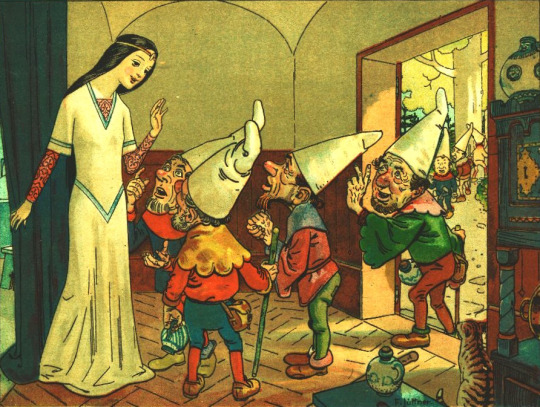
Snow White (Schneewittchen)
Of course, it is the AaTh 709 "Snow-White".
The full editing history of this tale was only "recently" recreated (the book was published in 2009, it was recent back then) in its entirety. We know that it begins in 1808 with a version collected by Ferdinand Grimm, brother of Jacob and Wilhelm, called "Schneeweibchen". It seems Ferdinand might have invented the story on his own. Wilhelm and Jacob then slowly modified it, by adding details from other collected versions, before publishing it in their first edition in 1810 (they did note at the time that it was a Lower-Germany story, and that in Upper-Germany the tale did exist but with the deformed name of "Schliwitchen". When the Grimms did their second edition, the main change they performed onto this story was the modification of the wicked mother into a wicked stepmother - something they also did for "Hansel and Gretel". In fact, from edition to edition the Grimms kept adding adjectives and expressons highlighting the opposition between the girl and the vain queen.
Th Grimms had collected several variations of the tale. One was much closer to the tale of "The Juniper Tree" and in it the queen, as she was with the king on a hunting sled, cut her finger while peeling an apple. In another variation the king and queen were walking by three mounts of snow, than went by three pools of blood, and finally saw three ravens in the sky, and each time the king wishes for a girl with the corresponding colors - soon afterward the couple encountered a little girl fitting this description. The king, immediately attached to her, takes her with him in their royal carriage, but the queen immediately hates her and tries to get rid of her - so she asks the girl to go seek a glove she threw out of the window, and while she is out of the carriage she asks the driver to leave as fast as he can. Then the little girl takes refuge at the seven dwarves' house.
The fairytale existed in German literature before the brothers Grimm published it. Indeed J. A. Musaüs had published in 1782 a fairytale called "Richilde" - and the Grimm were influenced by this tale, since in the margins of their first edition, they noted about Snow-White "It is Musaüs' Richilde". There was also a Snow-White story that had been published in 1809 in a fairytale book by A. L. Grimm (no relationship to the brothers Grimm). The Brothers Grimm did note the striking similarity between this story and the Norse pseudo-historical legend of Snäsridr, the beautiful wife of "Harald with fair hair", a wife that, when she died, stayed in her prime state so that it seemed she was still alive.
This fairy-tale has a very wide area of spreading, as it can be found from Ireland to Turkey passing by central Africa. It is especially present in the literary Italian compilations of fairytales. Basile has three variations of the story in his Pentamerone: "The raven", "Nennillo and Nennella" as well as "The she-cook".
The various virtues that Snow-White shows in this tale made her one of the big role models within the education of bourgeoisie girls in the 19th century - alongside Cinderella, of course. In fact, according to H-J Uther's analysis of the story, it is because of all her virtues that Snow-White's beauty does not fade away and stays undamaged even in death, unlike her wicked stepmother whose vices causes the fading of her charms. Finally, this fairytale is actually the proof that the brothers Grimm did not simply listed their fairytales one after the other in a random order, but deliberately created "bridges" and internal references to create a cohesive world within their book. Indeed, the mention of the snowflakes looking like feathers references "Frau Holle", while the glass coffin can be found back in, of course, "The Glass Coffin", and the blood-drops on the snow evokes "The Juniper Tree".

Rumpelstilzchen
Yes this story is the famous "Rumpelstilskin" (or Rumpelstiltskin? I never know how to write it in English). But why keep the German spelling? Because Rimasson-Fertin has some stuff to say about it: this name is the diminutive form of "Rumpelstilz", a term that Jacob Grimm defined in his "German Dictionary" as being synonymous with "poltergeist" (he noted a similarity between Poltergeist and Rumpelgeist, both designated a very loud spirit). While today "poltergeist" is mostly associated with ghosts, in a much broader way it designate a dwarf, a dead or a devil - or just any kind of phenomenon caused by witchcraft.
This story corresponds to the AaTh 500 "The name of the supernatural being". This fairytale has an interesting evolution history... Jacob Grimm had a version of it as early as 1808, named "Rumpenstünzchen", which was then slightly modified for the 1810 manuscript. This tale was actually the mix of two different versions - and one of these versions had a different ending. The queen didn't sent messengers searching for the dwarf's name, rather the king spotted the little man while returning from hunting on the third day. The Grimm also noted a variation where the initial situation was reversed: a young girl who had to spin hemp but could only manage to spin gold much to everybody's despair, and a small man appeared to promise her a wedding to a king's son in exchange for her firstborn child. It ended in such a way: the queen herself spotted the small man singing his name, jumping around a fire while riding a ladle like a horse. When she guessed his name, he flew out of the window and into the sky, riding the ladle like a witch's broom. We know that the episode of the spinning of the straw was only added by the Grimm in 1812 (it is not in the 1810 version), and that the final scene of the dwarf self-mutilating comes from a story of Lisette Wild and was added in 1819.
The first literary record of this story is a French fairytale published in 1705 and written by Mlle Marie-Jeanne L'Héritier de Villandon. It was "L'Histoire de Ricdin-Ricdon" (The Tale of Ricdin-Ricdon), published in her "La Tour ténébreuse et les jours lumineux" (The Shadowy tower and the luminous days). It had been translated in German by Johann Gottwert Müller in 1790, under the title "Straubfedern", "Ostrich feathers". As for the name "Rumpelstilzchen", it actually originates from Johann Fischart's Grman adaptation of the French "Gargantua", "Geschichtklitterung" (1584) - in it, Fischart lists various children game by name, and mentions a "Rumpele stilt oder der Poppart".
This fairytale type is very present in Western, Central and Northern Europe (British Isles and Ireland included), with also a few spottings in the Baltic countries, China and Japan. The name of the supernatural being always changes from one region or country to the next (in Swiss it is Hans-Öfeli, in Dutch Trillevip, in Swedish Titteliture, in Finnish Tuttirituli, in the Suffolk it is Tom Tit Tot, in Welsh Gnarwynathrot, in Irish it is Eve-Trot or Trit-a-Trot...). It is part of the enormous success of this tale-type: every country has to invent its own brand of nonsensical, un-guessable name. As for the rhymed song through which the dwarf betrays its name, it is found in England as "Nimmy nimmy not / My name is Tom Tit Tot", and in an Afro-American version of North Carolina "I'm so glad that she do not know / That my name is Tabutoe Tambutoe".
The brothers Grimm noted that in Germanic mythology it was typical for underground beings (aka dwarfs) to have names that are not usual among humankind, which is why, again according to them, the dwarf of this story would feel in perfect safety proposing the queen such a game. The rule according to which obtaining the name of a supernatural being means gaining a form of power over them is very common, and is even reused in another one of the Grimm stories: KHM 136, "Iron John". H. Rölleke did an analysis of the names the queen proposes at first: we have the three names of the Magi, aka the Three Wise Men, or King-Magi, which gives a Christian setting to the story, and could also serve as a metonymy for all the saint names found in the Christian calendar. As for "Heinz" and "Kunz", Rölleke sees in them the diminutives of the names of the medieval emperors Heinrich and Konrad, which used to be some of the most popular male names among German-speaking countries.

All-Kinds-of-Fur (Allerleirauh)
It corresponds to the AaTh 510B "The dresses of gold, silver and stars", also known as "Donkey Skin", after the famous Charles Perrault fairytales.
The story we read today was the one told to the Grimm by Dortchen Wild, but there was a variation of it told to the brothers by Jeannette Hassenpflug, "Princess Mouse-Skin", which was present in the 1812's edition of the volume (n°71) but was then moves to the annotations as a mere mention. The version of the story from the first draft (the 1810 manuscript) was called "Allerlei Rauch", "All Kinds of Smoke", and was heavily inspired by one of the tales present within the novel "Schilly" by Carl Nehrlich.
The line "God forbade a father from marrying his daughter. Nothing good can come from this sin which will cause the kingdom's decadence" was added in the 1819 edition, and references a tale of Albert Ludwig Grimm called "Brunnenhold und Brunnenstark". The brothers Grimm insisted even more on the condamnation of the sin of incest when rewriting the story for their "small collection" for kids, and also insisted heavily upon a political extension of such a decision, which would damage the state itself. It is actually an allussion to the failure of the Frankfort Parliament, which had been gathered in 1848 at the Paulskirche in an attempt to create a constitution for all of Germany - to which Jacob Grimm had taken part.
A variation of the story collected in Paderborn has the last coat made of all the furs of the kingdom, plus moss and various forest-related material. In this version, the heroine puts the cloak on top of her three beautiful dresses before fleeing, and she hides in an empty tree where she is discovered, not during a hunting party, but by woodsman that cut off the tree she was sleeping into, to bring wood to the king. All-Kinds-of-Fur works in the castle's kitchen but one day as she is preparing the soup, the king has her sit on his chair so she can delouse him (a motif also present in "The Devil with Three Golden Hair). As she does, the king glimpses the beautiful shining dress under the cloak's sleeve, and this is how he discovers the girl's true appearance. Another variation of the story yet, also collected in Paderborn, has the heroine pretending to be mute. One day the king hits her with a whip, it rips apart the coat, revealing the golden dress underneath.
Not all the German versions of the story include the incest motif. In Musaüs' take on the story, "Die Nymphe des Brunnens", "The Nymph of the Well", the heroine leaves her father's castle because it has been destroyed. Her godmother, an undine, gifts her a small magical box and when she leaves the ball she says "Night behind me and day before me / Might nobody see me!". As for the version of Hassenpflug, "Princess Mouse-Skin", it begins as the KHM 179, "The Goose-Girl at the Well": a king wants to know which of his three daughters love him the most, the first says she loves him more than the whole kingdom, the second more than pearls and precious stones, the third more than salt. The furious father has the last princess be sent into the woods to be killed, but the servant tasked with the execution spares her out of pity, and gives her, by her request, a coat made of mice skin. The rest of the story goes like within "All-Kinds-of-Fur", except for the final wedding, to which the father-king is invited. All the dishes served to him are without salt, and he ends up saying he prefers to die rather than continue eating without salt. The princess-daughter reveals herself and points out how he tried to had her killed for loving him more than salt. Her father begs her for forgiveness, and the tale ends with her accepting.
The motif of the incest can, however, be found back in a variation of the KHM 31 (The Girl Without Hands) that the Grimms collected, and where the father mutilates the daughter for refusing to marry him. The motif of the king trying to marry his own daughter has been attested in many, many European stories ever since the 12th century. As for the boots that are thrown in the heroine's face in the Grimm story, while in the final edition it has no follow-up, in the 1812 edition it was a recurring element forming a motif within the tale. Another German version of the story that preserved this structure that the Grimms erased is the story collected by Vernaleken, "Throw-Broom, Throw-Brush and Throw-Comb". In it the king throws out of anger at the face of the heroine (Adelaide) a broom, a brush and a comb. Every time she goes to the ball, she changes her pseudonym to fit which item hit her (one night she is "Throw-Broom", another she is "Throw-Brush", etc...). There are many, many variations of the story containing such a "name play".
Other famous examples of this variation, outside of Charles Perrault's Donkeyskin, include Straparola's "The maiden in the chest", Basile's "The She-Bear", Afanassiev's "Pig-Skin".
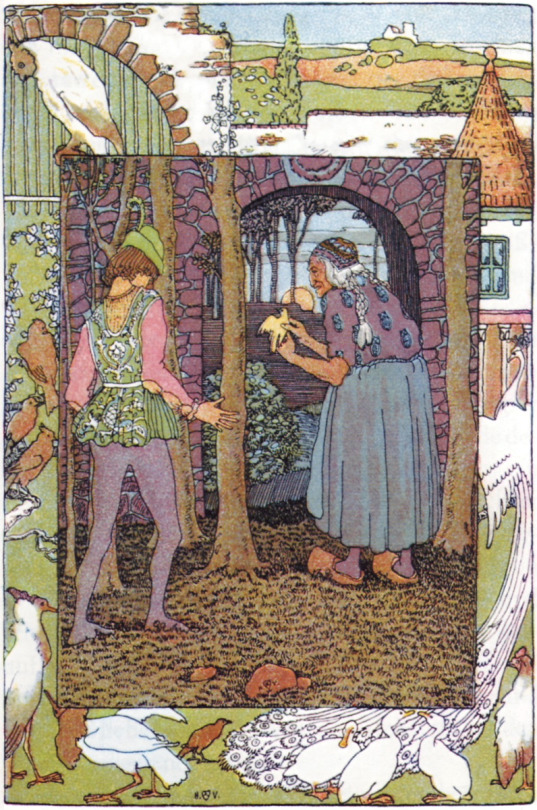
Jorinde and Joringel (Jorinde und Joringel)
It corresponds to the AaTH 405, named and created after this story, "Jorinde and Joringel".
The interesting thing with this story is that the brothers Grimm did not collect it from a direct source. Rather they lifted it, to the exact word, from the autobiography of Johann Heinrich Jung, "Jugend/Youth", published in 1779. The brothers deemed that the way Jung-Stilling had written the tale was the "perfect" way to tell the story, according to their definition of a fairytale. Though they did note the existence of a version of the story told in Schwalm - but which differs very little from the story of Jung-Stilling.
The brothers Grimm themselves noted a similarity between this story, and the KHM 123, "The Old Woman in the Wood". Rimasson-Fertin notes that the witch in this story is to be compared to the ones appearing in "Hansel and Gretel" and in "Little Brother and Little Sister". As for the name of the demon the witch invokes, "Zachiel", H. Rölleke identified it as a form of "Zachariel", a demon name coming from the very popular 17th century demonology grimoire "Clavicula Salomonis", "The Clavicles of Salomon".
#brothers grimm#grimm fairytales#brothers grimm fairytales#german fairytales#sleeping beauty#briar rose#snow-white#snow white#jorinde and joringel#all kinds of fur#the juniper tree#the devil with three golden hair#the three golden hair of the devil#the robber bridegroom#the maiden without hands#the girl without hands
44 notes
·
View notes
Text
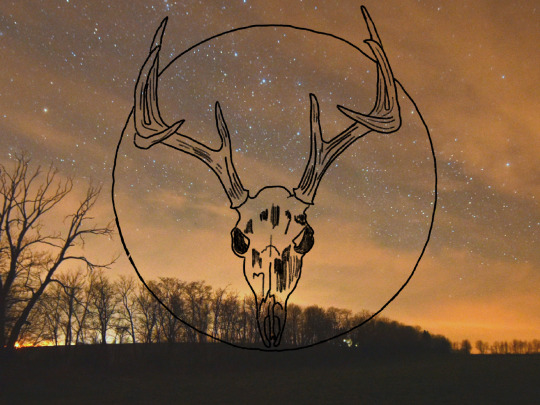
Like the Witch Father, the Witch Mother is the dual-natured Archetypal Divine Feminine. She is life and death, creation and destruction, She is all. In Traditional Witchcraft, She is an initiator into witchcraft and the being that creates and molds the world to Her whim. The Witch Mother is essentially Witchcraft itself.
In the same way it is hard to define and pinpoint the Witch Father, the Witch Mother is another enigmatic spirit essential to Traditional Witchcraft. Across cultures and centuries, She has been known by many names. Diana, Herodias, Frau Holle, Baba Yaga, Sa Rejusta, the Queen of Elphame, and Nicnevin are some of the names that She has gone by.
As it stands, the Witch Mother is the Mother of all Witches. From her, we begin to learn the ways of the Crooked Path. Usually, it is by chance encounter that we meet Her, or one of Her emissaries, and we are put through trials. Through these trials, however, comes the enlightenment of the Path and we find our Witch Fire lit. With Her blessings, we are granted access to the unseen.
The Witch Mother is a Dark Feminine Great Spirit. She is the primordial womb from which all life emanates. She forms the Earth to Her liking. The Witch Mother holds sway over life and death, the seasons, and even the turning of the day. She is the Magna Mater. She fiercely protects Her children and gives us the knowledge and tools that we need in order to defend ourselves from those wishing us harm.
Her lore can be dark and sometimes violent. But it’s necessary as a protectress for Her family. When we prove ourselves to Her, She becomes a Great Ally for us in our paths.
Baba Yaga
In Vasilisa the Beautiful and Baba Yaga, we come to learn that Baba Yaga has mastery over the world. Through her servants, the days and nights turn over. In the story of Natasha, Baba Yaga has a towel that can create rivers and a comb that can create forests. Baba Yaga occupies the archetype of Witch Mother as the initiator and creatrix of the world. She gives these girls tasks which at first glance seem impossible but by their wit and cunning natures, they overcome them. This leads to Baba Yaga fulfilling her promise and granting them the boon they came to her for. For Vasilisa, the fire she seeks also burns her stepmother and sisters to ashes leaving her free from their oppression and hatred.
Frau Holle or Mother Hulda
In the story of Mother Hulda, two step-sisters end up in the Otherworld and in service to Her. The first sister is hardworking while the other one is lazy. The hardworking sister drops her spindle into the well while trying to clean it and must figure out a way to get it out. She falls in and comes out in the Otherworld. She meets an apple tree asking for help to get its ripe fruit down from its branches and a loaf of bread asking to be taken from the fire before it burns. Naturally, she obliges. Coming to a house in the meadow, she meets Mother Hulda who asks her for help around the house. This sister is very hardworking and listens to all of Mother Hulda’s requests, including how to fluff her pillows so the feathers fall so it will snow on Earth. Accomplishing this and asking to return home, she is sent back with gold falling all about her to keep.
The second sister, being lazy and greedy jumps into the well and into the otherworld wanting her own gold. She marches past the apple tree and the bread not stopping to help them, and comes to meet Mother Hulda and agrees to work for her as well. She performs well on the first day and gives way to laziness in the coming days. When she asks to go home, expecting to be showered in gold, she is told to “get lost” and is instead showered in tar.
In this story, we see Her control over the weather and her home in the Otherworld. She has the power to bless and to curse. She expects those who want to learn witchcraft and the occult arts to hold up their end of the bargain. She grants power to those who are willing to work for it.
Queen of Elfame
In several witch trials in Scotland, we see the Queen of Elfame make an appearance. In the trial of Bessie Dunlop (1576), she confesses that she has traveled to the Otherworld and has communed with the Queen of Elfame several times. For her kindness when in the guise of an old woman, Bessie is granted a familiar who teaches her natural remedies, knowledge of where to find lost items, and information about prophecies.
Several years later, in 1588, Alison Pearson (also styled as Alesoun Peirsoun) was burned at the stake for communing with the Queen. In Elfame, she learned of medicinal herbs, healing arts, and how to make charms and potions which she sold.
In 1597, Andro (Andrew) Man confesses that he has lain with the Queen of Elphen and they begot many children together. He further confessed that through her, he would become knowledgeable in all things, help and cure all sicknesses except death. In his confession, Andro Man goes on to explain that “the Queen of Elphen has a grip of all the craft, but Christsonday (the Devil) is the husband and has all power under God.” They also have spirits in their company that are known to Man.
Aradia: or the Gospel of Witches
In Aradia, it is attested that Diana is the Mother of Witches. She teaches her daughter, Aradia, witchcraft and charges her to go to Earth to teach humans this art. Specifically, Aradia is sent to teach the poor and the slaves witchcraft in order to free themselves from their lot in life.
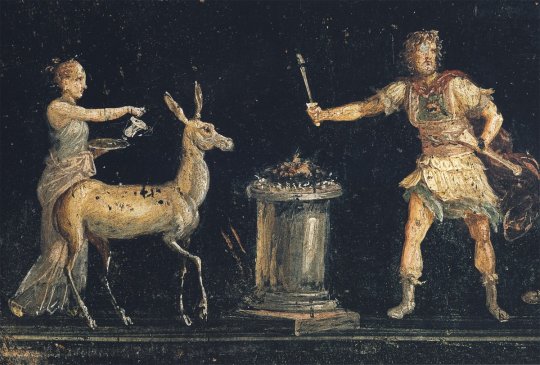
#witch mother#witch fire#witchblr#witch#witchcraft#traditional witch#traditional witchcraft#aradia#diana#witch trials#queen of elfame#baba yaga
104 notes
·
View notes
Note
if ur open to one shots maybe one where aru goes missing (post noi) and he fights and tries really hard to find her??
love ur writing btw
OMG YES THIS IS SO GOOD (also THANK YOU for gassing me up this week has been really hard for me and suddenly people are just being super sweet 🥹🥹???)
She’d been right next to him. In their big fluffy bed, a million miles from everything bad.
She had been right there.
“Shah?” He called out, sounding strangled. He already knew she wasn’t in the house, he could feel it in his bones.
He called for her again, his attempt futile.
Shaking, he dialed her phone, it going directly to voicemail.
What was going on?
Aiden grabbed his scimitars and his “amamma bag”- Aru loved to call it that, and-
Where was Aru??? Why is she not here???
Her phone wasn’t at home though, and he turned on the find my phone and pressed TRACK on her contact photo. It showed five miles away, in the old abandoned mall near Emory College.
Aiden buckled into the car and took off rapidly speed, breaking at least seven traffic rules in the five miles he drove. His hands were slick with panic, and he could feel his chest constricting, the same thought cycling through his head over and over again. Not again.
He parked on the street outside of where Aru was- or at least her phone was. He needed to get it together. No amount of panicking would help her if she was in trouble. He breathed deeply and searched the atmosphere for anything even close to vajra, her electrical bolt. It usually made the air more charged, a small sign he’d grown to notice over the years he’d been around Aru.
It was faint, but the smell of a storm lingered in the air. It wasn’t unlikely for Georgian Februaries to be stormy, but this smell was too… centralised. Too adamant.
He raced into the warehouse, pulling up his black hood. He heard a muffled scream and the scraping of metal, and then suddenly a thud and pure silence.
Aiden rushed forward, heart pounding in his ears. That scream was definitely Shah. When he entered the room, he saw a demon bleeding from the nose on the floor, groaning and rolling onto its side. And tired to a toppled chair, was Aru, mouth stuffed with a cloth. Aiden put her chair the right side up, pulling the gag out of her mouth with a strangled sob. She jumped into his arms, fearless, and completely unfazed, more comforting him than herself.
“I’m okay,” she told him softly. “You got me. I’m alright.”
“How did I-”
“Not important.” She interrupted. “It doesn’t matter. What does matter, though, is getting this asshole-” she gestures to the demon with a broken nose, a neat mark of her handiwork- “dead, or out of here.”
“I vote for dead,” Aiden said grimly, pulling his scimitars out.
“And I don’t,” Aru said. She walked over to her captor, the ground practically shaking with her rage as she gabbed his face and menacingly said, “who sent you, dick wad? Who told you where I live?”
The demon gave a wimper as she continued to squeeze his very broken face. “T-the woman. Pretty.”
Aru frowned. Aiden was at a loss too. “There are millions of pretty women in the Otherworld. Which one, demon?”
“Promise. Promise you won’t kill me.” Aiden couldn’t see the expression Aru made to the demon, but its shoulders sagged for a moment before clearly responding, “Opal.” And promptly dissolving into dust.
I grabbed Aru’s hand, scared she’ll disappear, too. Again.
“Opal, huh,” she murmured, eyes unfocused.
“Shah, do you need to see a doctor? Did you hit your head? Any broken bones?”
She brightened for a second, refocusing on Aiden. “No, I’m fine.”
And so she was fine.
They walked to the car, the chill winter night willing them straight back into their blankets at home, but this time?
Aiden didn’t let go.
#aru shah#roshani chokshi#the pandava quintet#aruden#lightning smolder#aiden acharya#aru shah and the end of time#aru shah and the city of gold#aru shah and the nectar of immortality#aru shah and the song of death#aru shah and the tree of wishes#tpq#one shot#asks#ask me anything#anon this was so cool!!!!
19 notes
·
View notes
Text
My Extremely Thorough Examination of klaus.xls (Klaus' spreadsheet) (as of TMAGP 19)
PART 2: Locations & their significance
Here's the link to the doc!:
https://docs.google.com/spreadsheets/u/0/d/1B-t8II1ogRaqJdyBGzZsVzDtnqaRTIqxPAqQRye_0SI/htmlview?pli=1#
So many of the cases have a location attached, as I said in part 1, some are vague in that they are just cities and not specific enough while some are buildings. I did research on the places as specific as I could and found that many of these places have a reputation for strange occurrences, hauntings, m**ders, cults, UFO sightings, etc. I know, I know, people can start rumors and some places might not actually be significant in that way. Here is a breakdown of the history behind these locations and why they might be on this file.
#3 Berwyn Mountains, Wales
Date: June 12, 2001
Category: 2
Rank: b
TSHU: 4038
Notes: [data damaged]

The Berwyn Mountains are a beloved site in Wales. However, there is a famous incident that these mountains seem to be known for.
On the night of January 23, 1974, lights and strange noises were observed in correlation with a 3.5 Magnitude earthquake that shook the area. It was initially thought to be a UFO crash but this has since been disproved. It is called the "Roswelsh Incident."
These mountains also played a part in King Henry II of England's retreat during his invasion of Gwynedd. The king had attempted to travel through the mountains and fight the Welsh. However, the Welsh army was superior and heavy rains made the English decide to retreat.
The mountains are also mentioned to be involved with Welsh mythology. According to many sources, the mountains are the physical and geographical location of Annwn, aka the Celtic Otherworld, the place of the spirits of the dead in the land of the ancient Britons. Many Welsh tales could be of significance here.
I highly recommend reading these sources to learn more about the mythology surrounding the mountains. Do let me know if anything sticks out or if you notice any parallels of significance!
#5. Tutbury Castle, Staffordshire, England
Date: May 14, 2012
Category: 2
Rank: C
TSHU: 5047
Notes: [data damaged]

Tutbury Castle is a largely ruined Medieval castle that is said to have been built c. 1068. It was destroyed plenty in 1264 and significantly repaired in the 1300s. It is largely famous for being the place where the infamous Mary, Queen of Scots was held prisoner by Elizabeth I of England.

Also Eleanor of Aquitane stayed here at some point, however, I could not find any information about the context of her stay.
The castle later decayed heavily during the 16th and 17th centuries, during the English Civil War. It was partially restored in the late 18th century.
The castle is also said to be haunted, of course. The ghosts reported include Mary, Queen of Scots herself, a white lady, a man in armor, a little girl, and a little boy.
Here are some sources if you'd like to learn more:
#10. Borley Rectory, Essex
Date: May 5, 2011
Category: 2
Rank: C
TSHU: 5056
Notes: [data damaged]

THE BORLEY RECTORY HAS BEEN CALLED THE MOST HAUNTED PLACE IN ENGLAND. I couldn't make this up if I tried. The house was built in 1862 to house Reverend Henry Dawson Bull and his family. This house replaced an earlier home that had burned down in 1841. The Bull family had a whopping 14 children so they added an additional wing.
Another family moved in after and called it in to be investigated. Psychic researcher Harry Price called it v haunted. The house burned down in 1939 and was demolished in 1944.
Here are some resources if you're interested in learning more:
#15. Cannock Chase, Staffordshire
Date: April 10, 1996
Category: 2
Rank: C
TSHU: 6039
Notes: [data damaged]

Cannock Chase refers to a wide area of countryside in Staffordshire, England.
This area in England was used as a large training ground in the first World War. Allied soldiers would train here. There was also a German POW camp built and used during WW1 and WW2.
It is also said that the forest here is haunted, the most notable ghost being The Black-Eyed Child as well as others UFOs, British big cats, werewolves and even Bigfoot have been claimed to wander this area.
TW for child murder
There was also a series of murders committed in Cannock Chase, nicknamed the Babes In the Ditch murders. Three girls between the ages of 5 and 7 were killed by Raymond Leslie Morris between 1965 and 1967. All three bodies were discovered on Cannock Chase. I won't go into details here but you can look it up if you're interested.
youtube
Part 3 Coming Soon!
Part 1: https://www.tumblr.com/yesimtrashforit/752558081617084416/my-thorough-examination-of-klausxls-klaus
#the magnus protocol#the magnus protocol theory#the magnus protocol arg#tmagp#tmagp thoughts#tmp spoilers#tmp#the magnus protocol spoilers#the magnus universe#berwyn mountains#history#english history#british history#uk history#tutbury castle#borley rectory#cannock chase#staffordshire#essex
8 notes
·
View notes
Text

The Pascha Pumpkin’s Gift
Once upon a moonlit night in Moriah Hallow, where enchanted forests whispered secrets and mystical creatures danced under silver leaves, Noam the Easter Bunny discovered a hidden path. It led to a cozy adobe house adorned with marigolds and flickering candles—a place where the veil between worlds was thin.
The Ximena family lived there, their hearts heavy with memories of loved ones who had crossed over. Día de los Muertos was approaching, and they prepared their ofrenda with care. But this year, something extraordinary awaited them.
Noam hopped up the stone steps, his fluffy tail twitching in anticipation. He carried a pumpkin—a pumpkin unlike any other. Its skin shimmered like moonstone, and when Noam touched it, he felt warmth and ancient magic.
“Dear Ximena family,” Noam whispered, “I bring you the Pascha Pumpkin. It holds the essence of love, faith, remembrance, and connection.” A connection between the living and the departed.
The family gathered around, eyes wide with wonder. They placed the Pascha Pumpkin on the ofrenda (alter) to honor their grandparents, its glow illuminating cherished photographs. It became the focal point for their Día de los Muertos celebrations. The ofrenda serves as a bridge between the living and the spirits. The Pascha Pumpkin radiant stories of departed grandparents, whispered secrets from the Otherworld, and sang songs that made the candles dance.
As midnight approached, the veil lifted. Spirits emerged—their laughter like wind chimes, their presence a balm for grieving hearts. Noam watched as the Ximena parents held hands, tears glistening. They felt their ancestors’ love, as tangible as the pumpkin’s warmth.
The Pascha Pumpkin pulsed, weaving memories into the night. It whispered forgotten lullabies, and the Ximena children giggled, feeling their grandparents’ kisses on their foreheads. And then, a miracle: the pumpkin split open, revealing tiny golden seeds. Each seed held a memory—a shared laugh, a stolen kiss, a favorite recipe.
Día de los Muertos dawned, and the ofrenda glowed with the Pascha Pumpkin miracle. The spirits danced, twirling with joy. Noam watched; his heart full. He knew that love transcended worlds, that even in grief, there is beauty.
And so, every year, the Ximena family planted the Pascha Pumpkin seeds in their garden, and soon, marigolds bloomed, their petals echoing laughter, sharing stories. Seeds from a Pascha Pumpkin can only grow marigolds and not another pumpkin. Noam visited, leaving gifts—a feather, a moonbeam, a whispered promise.
The Pascha Pumpkin’s legacy lived on, reminding all who passed by: Love was the bridge between realms, and remembrance was a gift to be cherished.
And that, my dear reader, is how Noam the Easter Bunny and the Pascha Pumpkin wove miracles into the tapestry of Moriah Hallow.
May your heart be as warm as a pumpkin’s glow, and may you find joy in the whispers of memories.
Learn more about The Pascha Pumpkin; in Noam Fall Garden adventure story book.
Hope you find One--- Hope you get One
#noam#christian broadcasting network#news#Halloween#pumpkins#day of the dead#dia de los muertos#books#christian books#best seller children books#Moriah Hallow#Noam Fall Garden#facts#random thoughts#history#easter#fun facts#world news
6 notes
·
View notes
Note
Thoughts on All Fours? August recap?
August began on the first day of Garden Magic install. For ten days, Kendall and I brought the show to life.
On the bus back to New York, I redownloaded instagram after three months, to post about the August 31 Body Wash workshop. I thought i'd delete it again after, but I've been enjoying it. Instagram is a beast, but it can be a really abundant resource if you figure out how to use it
Back in NY, Matt and I found a huge, beautiful bright green caterpillar. and shared the most extraordinary omakase experience. amazing to be in love and have a home together
Next morning, I flew to Charleston and joined Philip's family beach trip. It was incredibly intimate, joining a family beach trip, and it felt really special to be there. My parents picked me up after two nights, and we relished in our own particular family time. We watched challengers, twisters, parts of the olympics opening ceremony. I went to yoga and had waffle house with my abuelos
I flew back to New York on Saturday, and on Monday, I began my new job. It's the happiest I've felt starting a job. I'm an Associate Teacher in a classroom of 2-3.5 year olds. We spent the past two weeks meeting each other, organizing our classrooms, preparing ourselves for the year ahead. the whole experience feels familiar, like an old dream
I auditioned for a choir and was invited to join. our first rehearsal is sept 3 and i will be an alto 1. our first concert is nov 1 and we will sing alongside "the passion of joan of arc" film
Later today, I go to Newport for tomorrow's Body Wash workshop. I'm excited to keep reading All Fours. It's beautiful. I watched Alien: Romulus with M'Kenzy on Wednesday and feel so moved by pregnancy and birth . I've seen lots of friends this week <3
I've also spent a lot of time this month listening to the Otherworld podcast
Earlier this month I wrote "August is pregnant." It was both pregnant and birthing, and right now I feel completely content. I know the fall will be challenging, and I'm so excited to expand myself into it
Beautiful august. the best. thank you poppy
3 notes
·
View notes
Note
Hi! I'm trying to research slavic mythology, especially the afterlife, and I've come across a place called Prav but i haven't found much information on it as a whole, i was wondering if you had any information on it
Hello!
To the best of my knowledge the idea that the cosmos separates into Prav, Yav and Nav comes from The Book of Veles, a famous forgery pretending to describe pre-Christian Slavic history and religious customs.
I don’t think I’ve ever seen Prav (or Yav) discussed more broadly outside of that context. However the word Nav/Navia does have real cultural background as a term used to describe spirits of the dead.
Linguistic evidence implies that the early medieval Slavs may have shared a belief in some form of spirit or soul. In discussing these notions, various scholars point towards the word nav/nawie. This term is sometimes seen as being of pre-Slavic origin, and it is derived from Pre-Indo-European cultural heritage and refers to ‘death’ or ‘corpse’. It holds similar meaning in some of the contemporary Slavic languages, although in various (but not all) languages of the Slavs one may observe a shift in its meaning, whereby it refers to the sphere of demonology. For example, in eastern Polish dialects there are various names for rusałki, forest or water demons: mawki, mauki, nawki, miawki, mauki, mavky, niavky, majki. Another term for the spirits of the ancestors, which is also attributed an ancient origin, is lalka (lelka, łątka). It is noteworthy that after death the human soul went to the land of the dead, whose name is reconstructed as Nawia or Lala. (…) We know very little about the Slavic land of the dead. I have already mentioned that the words nav/nawie, known from textual accounts, referred to dead people or their ghosts and occasionally (in later times) malevolent spirits. The late medieval textual accounts from the Czech area confirm that Navia was the name of the land of the dead among the Western Slavs. ‘To go to Navia’ meant to die and ‘to prepare someone for Nav’, meant to kill
- Slavic Journeys to the Otherworld. Remarks on the Eschatology of Early Medieval Pomeranians by Kamil Kajkowski
A mention of navias can even be found in the Tale of Bygone years, where they serve as a personification of the plague that fell on the town of Polotsk in 1092.
Something very strange occurred in Polotsk, a hallucination: there was a noise during the night: demons were running through the street like people. If anyone came out of their house to look, they were immediately and invisibly wounded by the demons, and died of it, and they did not dare leave their houses. Then they began to appear during the day on horseback, and they themselves could not be seen, but only their horses’ hooves were visible. And this is how they wounded the people of Polotsk and of the region. And this is why the people said: “Navias (навие) are slaying the people of Polotsk”.
- Tale of Bygone Years as found in Sources of Slavic Pre-Christian Religion, red. Juan Antonio Álvarez-Pedrosa
Andrzej Szyjewski in Religia Słowian explores some more cases of navias appearing as malevolent spirits in Slavic folklore, citing bulgarian „twelve nawi”, evil spirits that suck the blood of lying-in women and bring diseases as well as broader Southern Slavic belief in navije/navje, bird-shaped spirits harassing women during pregnancy and in childbirth.
Overall, as you probably can guess I highly recommend reading „Slavic Journeys to the Otherworld. Remarks on the Eschatology of Early Medieval Pomeranians” and then continuing your search from there.
99 notes
·
View notes
Note
yo so this is really weird but im tryna think of names inspired by cozier songs and I see that you have a case of the hyper fixation so if it suits your fancy could you perhaps like think of some (no pressure at all btw)
i'm not entirely sure if i'll be much help but i will try my best :)
and p.s. a lot of his song reference stories i don't know much about and i'm willing to do some research to understand it but not that much so 😭
(edit note: i wrote this last night and stayed up till like 3am i think and i was gonna proofread it today but i was too busy/lazy and forgot to and i don't wanna take too long to reply so here you go good luck lol) i probably put way more effort into this than you wanted me to from the ask buttt too late now
ok so i'll start with the easier songs (the ones with actual names in the lyrics/title)
1.
"But, still, the mind, rejectin' this new empty space
Fills it with somethin' or someone
No closer could I be to God Or why he would do what he's done"
"What you're given, what you live in Darlin', it finds a way to live in you And your heart, love, has such darkness I feel it in the corners of the room"
Selby: gender-neutral name meaning "manor village; from the willow farm"
note that these songs are inspired by the fictional character De Selby. Hozier describes him as "-this philosopher, this kind of scholar, who's kind of part genius part lunatic. He sees the world through a very dream-like logic." its up to you if you want to name ur character after a song inspired by another character or not lol
here's a cool little description of the name on thebump.com: "Selby is a gender-neutral name of English origin, meaning “manor village.” Softly alluding to a place of dwelling in Yorkshire, England, Selby is a wholesome moniker that feels like home the minute it’s spoken. Selby is also a name linked to Old Norse history and points to a person or thing “from the willow farm.” Known for its connections to the Underworld and Otherworld, willow trees, in all their cosmic wonder, put realms beyond imagination right at our fingertips. Both an abode and a bridge to a land existent only in legends, Selby inspires us to look beyond what our eyes can see but reminds us to stay grounded while we’re at it!"
and hozier's other song "Would That I" also references willow trees so in a way it's inspired by 3 songs?
2.
"Do you think I'd give up
That this might've shook the love from me
Or that I was on the brink?
How could you think, darling, I'd scare so easily?
Now that it's done
There's not one thing that I would change
My life was a storm, since I was born
How could I fear any hurricane?"
"Heaven is not fit to house a love (like you and I)"
This song is about the story of Francesca da Ramini in the 2nd circle of hell. Basically Francesca has an affair with Paolo Malasta because of how unpleasant her husband (Paolo's brother) is. Eventually they get found out and her husband kills them. She's saying that even though she's in the 2nd circle of hell (where lustful souls are punished by somekind of hurricane) she doesn't regret loving Paolo and would do it all again. - a summary of a comment on genius.com about the lyrics
Francesca: feminine name meaning "free."
similar names: Francis, Francisca/o
you could also use Paolo (meaning "small; humble) if you want
3.
"I do not have wings, love, I never will
Soarin' over a world you are carryin'
If these heights should bring my fall
Let me be your own
Icarian carrion
If the wind turns, if I hit a squall
Allow the ground to find its brutal way to me
If I should fall, on that day
I only pray, don't fall away from me"
clearly referencing icarus, the man who flew too close to the sun
Icarus: "follower; the one who reaches the sky"
4.
"I'd be the voice that urged Orpheus
When her body was found"
"And I'd be the immediate forgiveness
In Eurydice
Imagine being loved by me"
Orpheus: "the darkness of night"
Eurydice: "wide justice"
similar names: Alice, Justyce, Justin/e
ok now to get more creative
or not. quite a few of his songs reference light/darkness and there are a LOT of names that reference either one of those 😭 here's some examples:
light/shinning/clear/etc:
Phoebe, Clara, Nora, Lucian, Lucius, Elena, Ayla, Claire, Bodhi, Lucia
dark/shadow/etc:
Adriana, Achlys, Akmad, Apollo, Azazel, Asra, Carey, Colin, Corvina, Cronan
now back to "Would That I," he describes 2 kinds of loves in this song: the willow tree and the fire. thr willow being a past love, and the fire being the new that burnst away the attachment to the old. or something like, that im tired.
could always use Willow, which i think is a pretty name.
other names meaning willow tree: Dozier (haha), Arava, Salton, Wellesley, Liu, Wilford, Osier, Vide, Lian, Verba
names meaning fire: Ember, Bedelia (goddess of fire in Celtic mythology), Bridget, Calida, Cyra, Enya, Eliane, Elidth, Elidi, Hestia, Helia, Idalia, Mehri, Soleil, Seraphina, Oriane, Nina (also mentioned in "Nina Cried Power" which is a protest song)
speaking of Nina Cried power, a list of all the names in the song just in case: Nina Simone, Billie Holiday, Mavis Staples, Curtis Mayfield, Patti Smith, John Lennon, James Brown, B.B. King, Joni Mitchell, Pete Seeger, Marvin Gaye, Bob Dylan, Woody Guthrie. These are all names of musicians who contributed to the battle for equality over the years (Civil Rights Movement and other such protests) not sure if you'd want to name your character one of these since it wouldn't exactly be naming them after a Hozier song, but i felt like i should mention them anyways
other names mentioned in song lyrics but i'm too tired to do more researching rn: Cher, Atlas, Fred, Sergei (Sergei Polunin, the dancer in the music video for "Movement")
11 notes
·
View notes
Text
Larry Leroy's description of the desert otherworld is so vital to our understanding of it as a place, namely:
- he never meets Kevin or any of the former Desert Bluffs citizens despite being there around the same time they are
- he says that the landscape is exactly the same as NV just without buildings
- including the presence of Cactus J--- who looks like she's had the haircut from Telly
- day and night happen suddenly and although there is sunlight and moonlight there's no visible sun and moon making that light but there are many many stars
- a week or so was around 9 months for him (an hour was six weeks for others)
There could be several different DOW's? Or it changes slightly depending on who goes there? It could even be a completely alternate Night Vale straight up? Or things which happen in NV influence it beyond just things happening to the House Which Doesn't Exist.
9 notes
·
View notes
Text
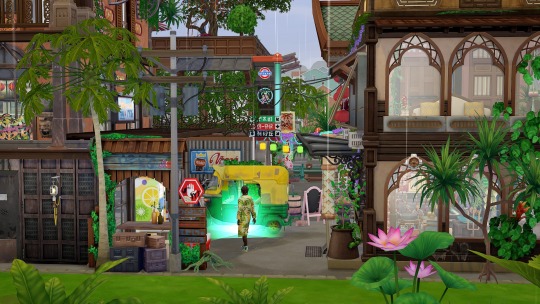

It was raining when the others arrived from their trip to Tartosa. Noxee awaits them. Saiwa and Jack already landed safe at the Beach House. (It often rains when Ji Ho is sad. Maybe because he's worried to cause Vlad inconvenience by staying with him again tonight?)
Haha they squeezed the five of them in the TukTuk! Maybe they can even travel around with all six of them?
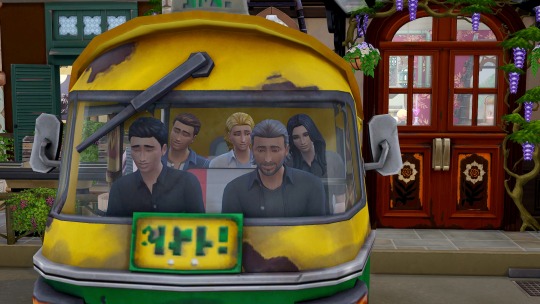
It's time for Noxee and Greg to leave. A visit in the Otherworld is draining and usually no one can stay here for longer. (That's why it's so calmingly empty all the time.) Greg hugs Kiyoshi: "Farewell my son." (Greg really seems to support Kiyoshi and Jack! The last time when I heard him say 'Farewell my son' was when he left Baby Jack to live with Uncle Stefan! And I've never seen Greg hugging any of the Boys. He barely talks to them. Well except when he yelled at them when he'd been their PE teacher ^^')
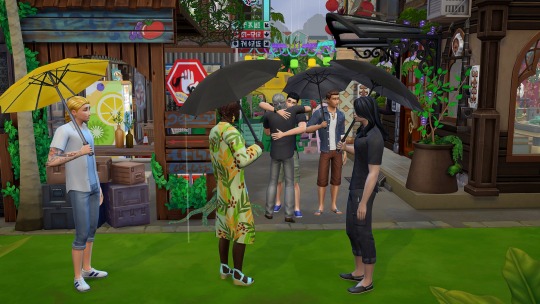
And then Ji Ho and Vlad sent Noxee and Greg back to Moonwood Mill with the devices Rubyn had built for them. (I don't think it's necessary for Grexee to kiss while teleporting, but they do it anyway ^^' Maybe if something goes wrong?) And Kiyoshi is so excited again when he sees them kissing hahaha
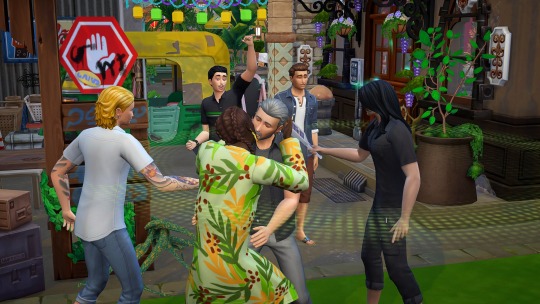
The Boys still have to earn money to pay back Rubyn and the others so they went to work for the rest of the day. It's painful for Kiyoshi to work in Jack's shop. The last time they'd been happy together was in their wine and cheese cellar at the invisible farm.
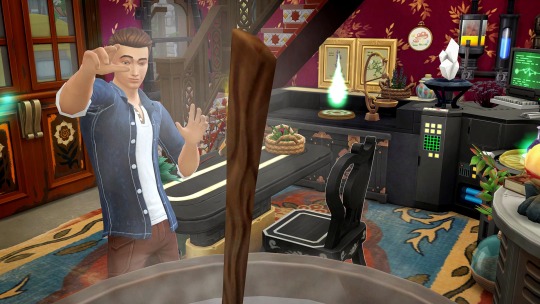
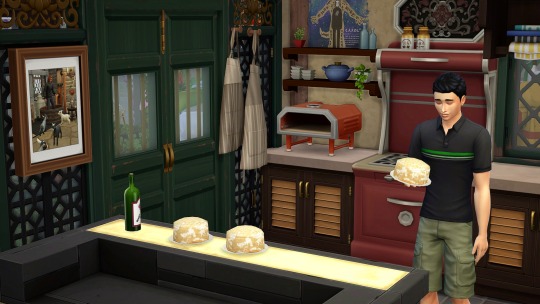
And even though Ji Ho is tired from sending back Noxee and Greg, he didn't feel dizzy from the ride, because he'd spent the last night with Vlad. So he went to his room to work on his songs. He missed this so much. And he misses their home and living here together with all of his friends.
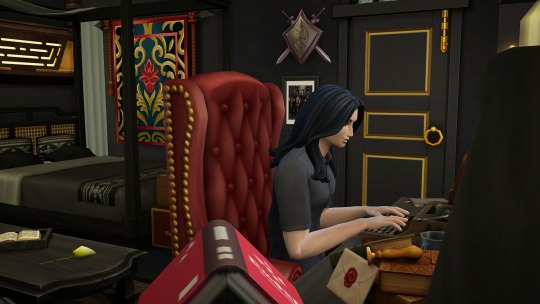
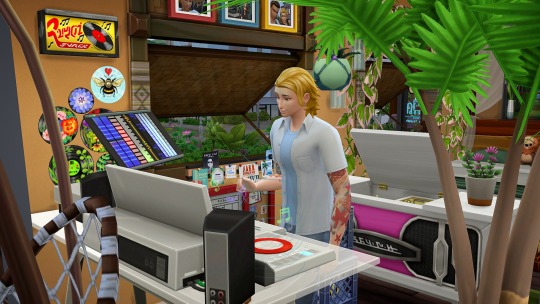
It was raining again when they had dinner. Jeb tried to cheer Ji Ho up and Vlad decided to not make a fuss because Ji Ho is spending the night with him again to not make him even more sad.
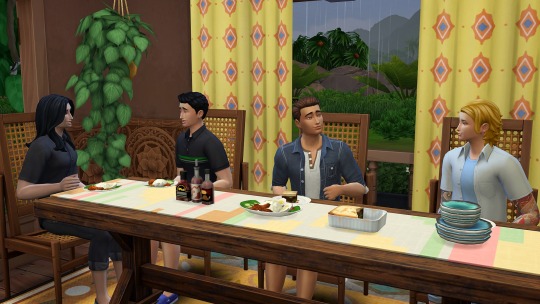
Jeb and Kiyoshi retreated to Jeb's apartment after dinner and got ready for bed. Jeb even installed a second sink for Kiyoshi. Jeb: "Oddly domestic, huh?" Kiyoshi grumbled something and stared into nowhere. Jeb sighed. Both of them want this with someone else...
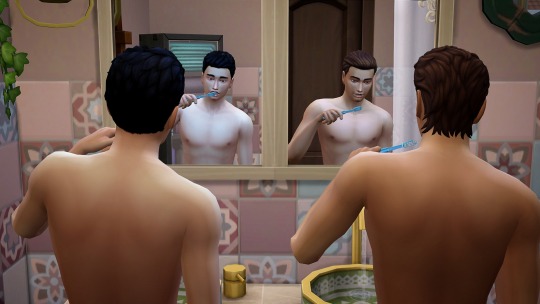
In the other bathroom, Vlad is trying hard not to make a fuss.
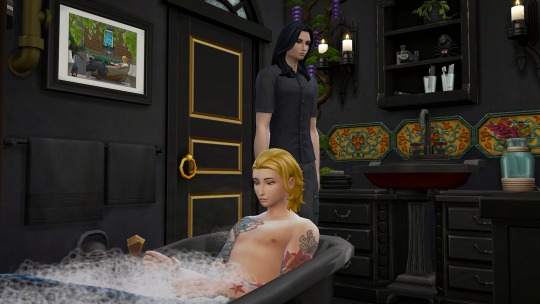
It's worse when Ji Ho is sad. It also affects him over their Bond. So Vlad put his pride and principles aside. They can have their non-relationship back when Ji Ho feels better.
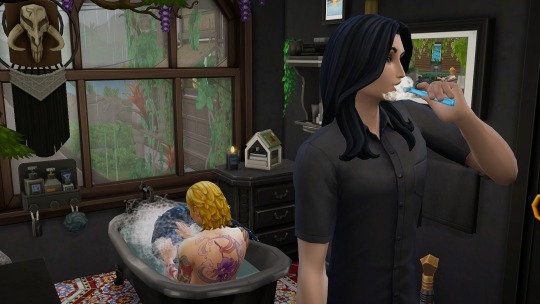
They awkwardly sat on Vlad's bed. Maybe it's the last time they are together before Ji Ho's ingame wedding with Prince Caleb ö.Ö
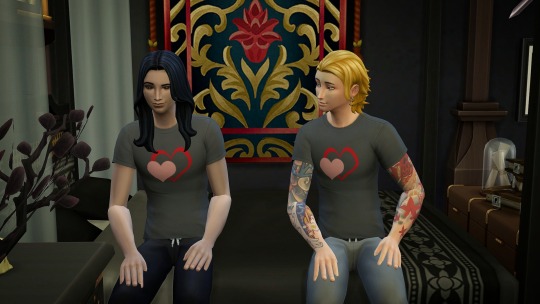
Vlad would never admit it but he also suffers from exhaustion. So he has some benefits of their encounter too. Teleporting a TukTuk around in the Otherworld is draining for both of them. And he loves Ji Ho from the first day he saw him. But the more time they spend together making love, the more painful it is because Ji Ho isn't able to love him. And of course Ji Ho feels these thoughts over the Bond. Ji Ho: "The therapy will fix this. I'll do anything..."
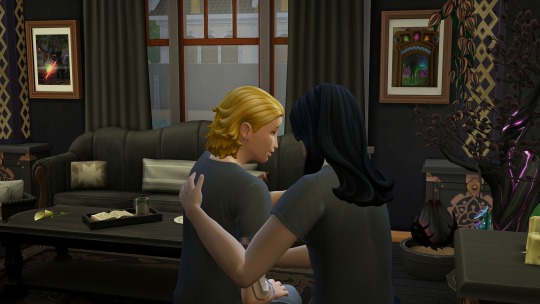
Vlad: "Don't worry about me."
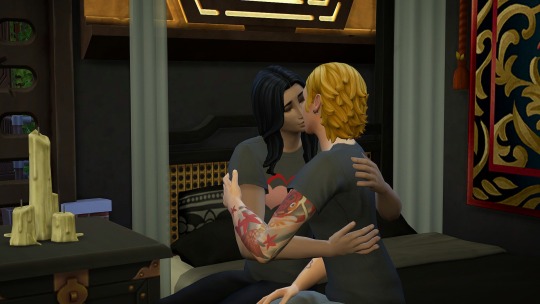
Ji Ho: "Vlad..." Vlad: "Shhh..."
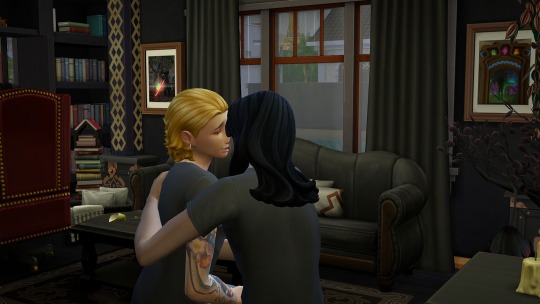
And then Ji Ho gave himself over to absolute pleasure... And the rain stopped from falling - because Vlad made Ji Ho very happy...
'Give yourself over to absolute pleasure Swim the warm waters of sins of the flesh Erotic nightmares beyond any measure And sensual daydreams to treasure forever Can't you just see it? Whoa, whoa, whoa'
Don't dream it, be it - The Rocky Horror Picture Show TMI: have I ever told you how much I love this movie? When I was ~16 y/o I watched it every day after school, for months! (I watched it way more often than even Star Wars ^^') And my friend and I used to sing the songs loud in the school bus hahaha omg!
Outtakes
Vlad: "Do you mind we proceed in Jeb's bed? So I don't miss you so much when I'm alone in my room again. Your scent in my bed and the memories of us there together..." Jo Ho: "Oh, ok." (That's what they did. I clicked on Vlad's bed and they ran over to Jeb's...)
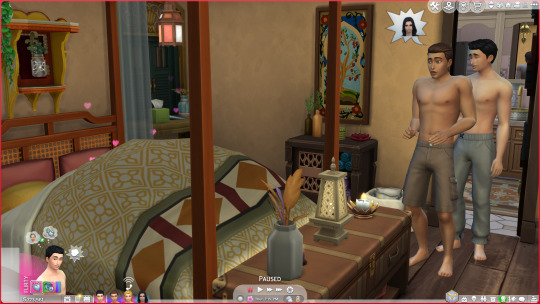
He really tried so hard not to make a fuss but he just can't help it ^^'
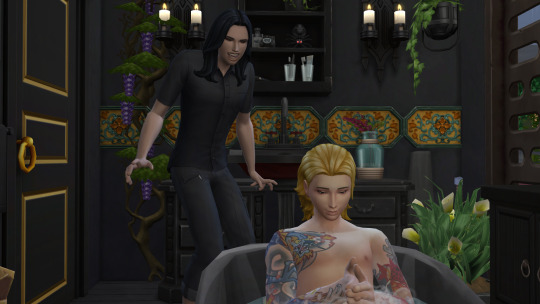

From the Beginning ~ Underwater Love ~ Latest Current Chapter: 🕹️ 'The One' from the beginning ▶️ here 📚 Previous Chapters: Chapters: 1-6 ~ 7-12 ~ 13-16 ~ 17-22 ~ 23-28
#the one game#therapy game#underwater love#TTT#The Crappy Home#greg and kiyoshi#the game#kiyoshi ito#sims 4 for rent#grexee#the one#woo ji ho#noxeema jackson#vlad tepesz#tiny can#jeb harris#greg lunvik#sims 4 vanilla#vladimir tepesz#show us your sims#tomarang#sims#sims 4 story#simlit#simblr#sims 4#ts4#tellusyourstories#showusyourstories
45 notes
·
View notes
Text
Really gotta hand it to X-Men, in the past 2 years they've given Marvel Civvies a plethora of reasons to hate them.
Made a "Mutants only" gated community island (for the 3rd time) where they invited every single mutant villain to join them with a clean slate, which included Apocalypse and Mr. Sinister (despite the latter... working at the Concentration Camp Magneto was at during WWII).
Used blackmail and mind control to push untested drugs onto the rest of the world in exchange for UN recognition, and diplomatic immunity for every single citizen of their island. Including the dangerous psychopath mutants like Sabretooth.
Inserted themselves into two galactic civil wars to help install monarchs sympathetic to them, one of them being Charles' direct daughter.
Saw an opportunity to take over Otherworld with the justification of, "it opened the way for them," used Betsy's new status as Captain Britain to install a puppet king James Braddock, and annexed Braddock Lighthouse when the UK refused their drugs and told them to get out of Britain.
Gave Beast a seat of power, which resulted in him using brainwashing symbiotic plant technology to enslave an entire country, and the X-Men end up paying hush money to them to prevent the news international.
Annexed and terraformed Mars in one night, gave it outright to mutants from another dimension who follow Apocalypse's Darwinism, then declared themselves the Voice of Sol and Earth's de-facto galactic representatives.
Acted as mercenaries for the Shi'ar Empire against worlds seeking independence.
Pushed a new form of gold standard onto the rest of the galaxy in the form of "Mysterium" as essentially a bribe for recognition as the self-proclaimed Voice of Sol.
And keep in mind, these are just the highlights, I'm not including unimportant shit like buying out Times Square to put in a tree house or establishing pirate coves in third world countries. Or Nature Girl going on around murdering minimum wage workers and getting let off scott-free to keep murdering wagies.
6 notes
·
View notes